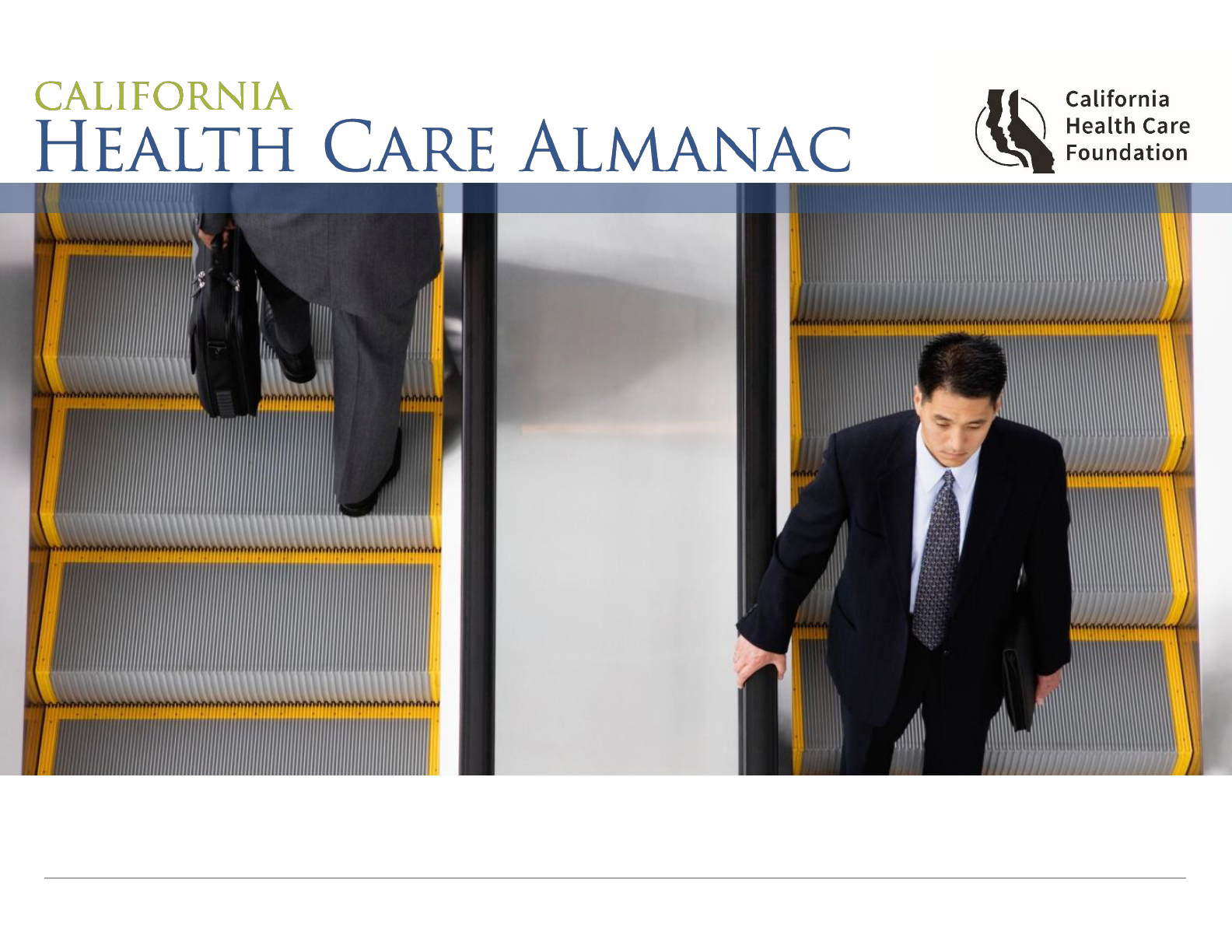
California Employer Health Benefits: Prices Up, Coverage Down
M A R C H 2 0 1 7

2
© 2017 CALI FORNI A HEALT H CARE F O U N D AT ION
California Employer Health Benefits
C O N T E N T S
Overview………………………..3
Coverage Availability………….4
Cost of Health Insurance……..9
Benefits and Cost Sharing…..18
Plan Choice and Enrollment..31
Employer Views and
Practices……………………….35
Methodology………………….41
Introduction
Since 2000, the percentage of employers offering health benefits has declined in California and
nationwide, although coverage rates among offering firms have remained stable. Only 55% of firms
reported offering health insurance to employees in 2016, down from 69% in 2000. Nineteen percent
of California firms reported that they increased cost sharing in the past year, and 27% of firms
reported that they were very or somewhat likely to increase employees’ premium contribution in the
next year. The prevalence of plans with large deductibles also continues to increase.
California Employer Health Benefits: Prices Up, Coverage Down presents data compiled from the
2016 California Employer Health Benefits Survey.
KEY FINDINGS INCLUDE:
• Health insurance premiums for family coverage grew by 5.6%. Family coverage premiums have
seen a cumulative 234% increase since 2002, compared to a 40% increase in the overall
inflation rate.
• The average monthly health insurance premium, including the employer contribution, was $597
for single coverage and $1,634 for family coverage in California, and was significantly higher
than the national average.
• Forty-one percent of workers in small firms faced an annual deductible of at least $1,000 for
single coverage, compared to 17% of workers in larger firms. The prevalence of these higher
deductibles in small firms has increased substantially in the past five years.
• Only one in four firms with many low-wage workers (those earning $23,000 or less) offered
health coverage to employees in 2016.
• In the past year, 24% of large firms extended eligibility for health benefits to workers not
previously eligible.
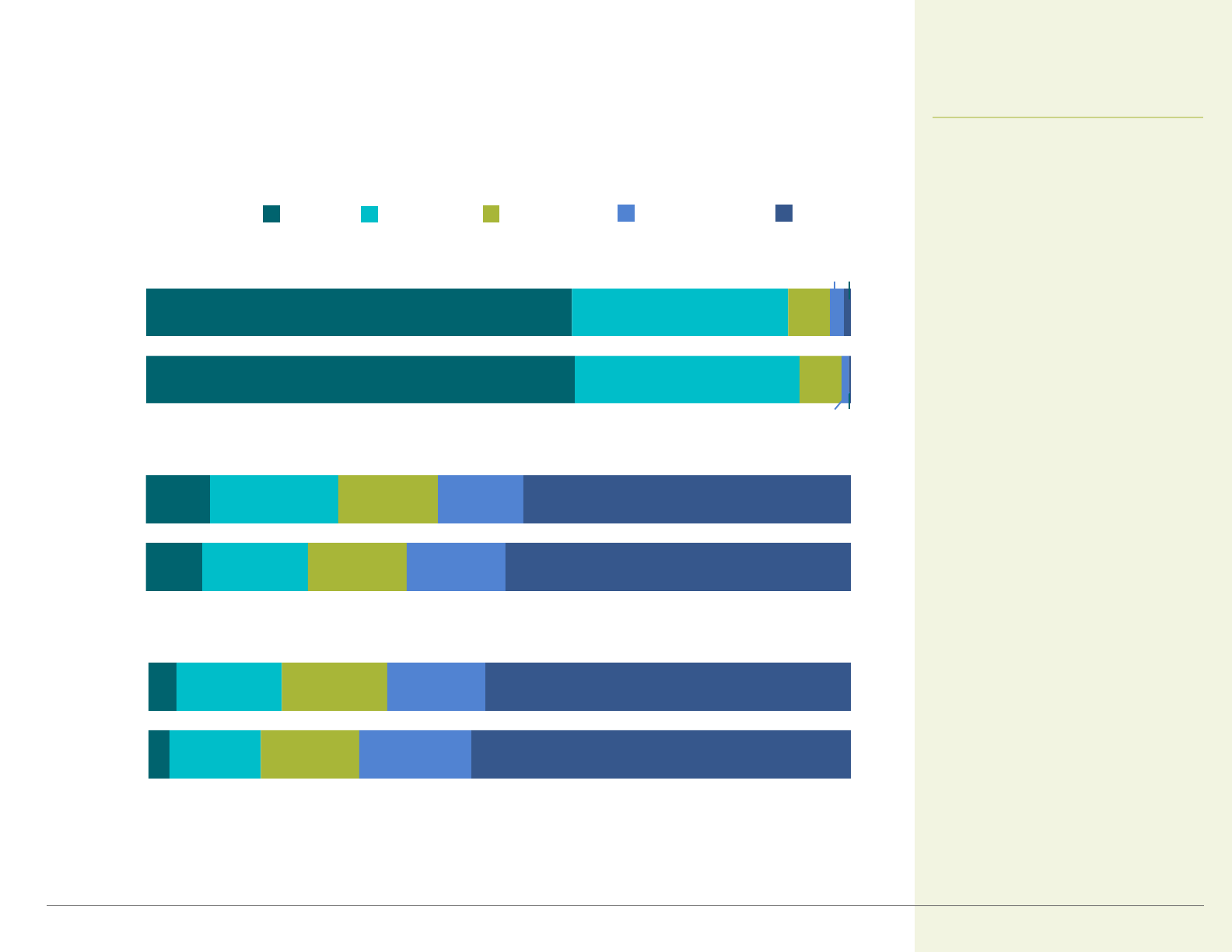
8%
9%
16%
18%
14%
14%
14%
12%
49%
46%
US
California
Workers
3
© 2 0 1 7 C A LIFOR NI A H E ALTH CARE FO U N D AT ION
NUMBER OF WORKERS
*Estimates are statistically different betw een California and US.
Note: Segments m ay not add to 100% due to roundin g .
Sources: California Employer Health Benefits Survey : 2016, CHCF/NORC; author analysis of Survey of Employer-Sponsored Health Benefits publ i c use file: 2016, Kaiser/HRET.
Employers, Workers, and Covered Workers,
by Firm Size
In 2016, California firms with 3
to 49 workers accounted for
92% of all employers, but just
27% of all workers, and 19% of
workers with health coverage,
a dynamic similar to national
firms.
61%
61%
32%
31%
6%
6%
1%
2%
<1%
1%
US
California
Employers*
3%
4%
13%
15%
14%
15%
16%
14%
54%
52%
US
California
Covered Workers
1,000+
200-999
10-49
3-9
California vs. United States, 2016
Overview
50-199
California Employer Health Benefits

Survey: 2004, CHCF/HRET; California Employer Health Benefits Survey: 2000-2003, Kaiser/HRET; Survey of Employer-Sponsored Health Benefits: 2000-2016, Kaiser/HRET.
4
© 2 0 1 7 C A LIFOR NI A H E ALTH CARE FO U N D AT ION
*Estimates are statistically different from the previous year shown.
Sources: California Employer Health Benefits Survey: 2007-2016, CHCF/NORC; California Employer Health Benefits Survey: 2005-2006, CHCF/HSC; California Employer Health Benefits
Employers Offering Coverage
The percentage of California
employers offering health
insurance in 2016 (55%) was
similar to the overall US rate of
56%. The recent decline in
California's offer rate was
largely due to fewer small firms
offering coverage.
68% 68%
66%
63%
60%
61%
59%
63%
59%
69%
60%
61%
57%
55%
57%
56%
69%
70%
71%
70%
67%
71%
70%
73%
69%*
63%*
60%
61%
58%
57%
55%
0%
10%
20%
30%
40%
50%
60%
70%
80%
90%
100%
2000 2001 2002 2003 2004 2005 2006 2007 2008 2009 2010 2011 2012 2013 2014 2015 2016
California
United States
Coverage Availability
California vs. United States, 2000 to 2016
California Employer Health Benefits
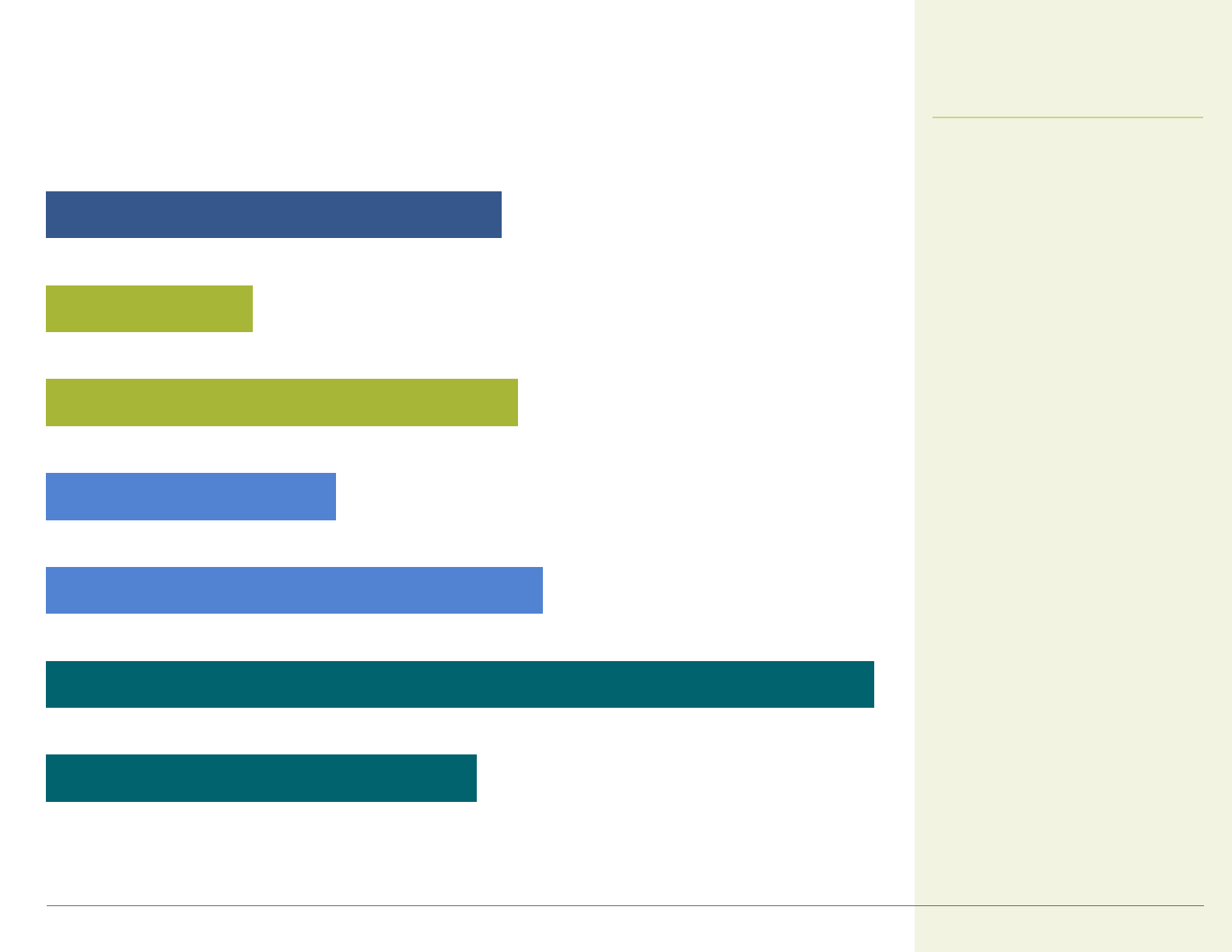
52%*
100%*
60%
35%
57%*
25%*
55%
No Union Workers*
Source: California Employer Health Benefits Survey: 2016, CHCF/NORC.
5
© 2 0 1 7 C A LIFOR NI A H E ALTH CARE FO U N D AT ION
At Least Some Union Workers*
Fewer Part-Time Workers
Many Part-Time Workers
Fewer Lower-Wage Workers*
Many Lower-Wage Workers*
All Firms
*Estimate is statistically different from all other firm s.
Notes: Firms with many lower-wage workers are defined as firms with 35% or more of w orkers earning $23,000 or less per year. Firms with fewer lower-w age workers are those with less
than 35% of w orkers earning that amount. Many part-time workers is defined as 35% or more of the w orkforce w orking part-time. Fewer part-time workers is the inverse.
Employers Offering Coverage, by Firm Characteristics
Whether a company offers
coverage varies widely by
firm characteristics. Firms
that employ many lower-
wage workers were less
likely to offer health
insurance than those that
employ fewer lower-wage
workers. All companies with
union workers (100%)
offered coverage, versus
only 52% of those with no
union workers.
California, 2016
California Employer Health Benefits
Coverage Availability
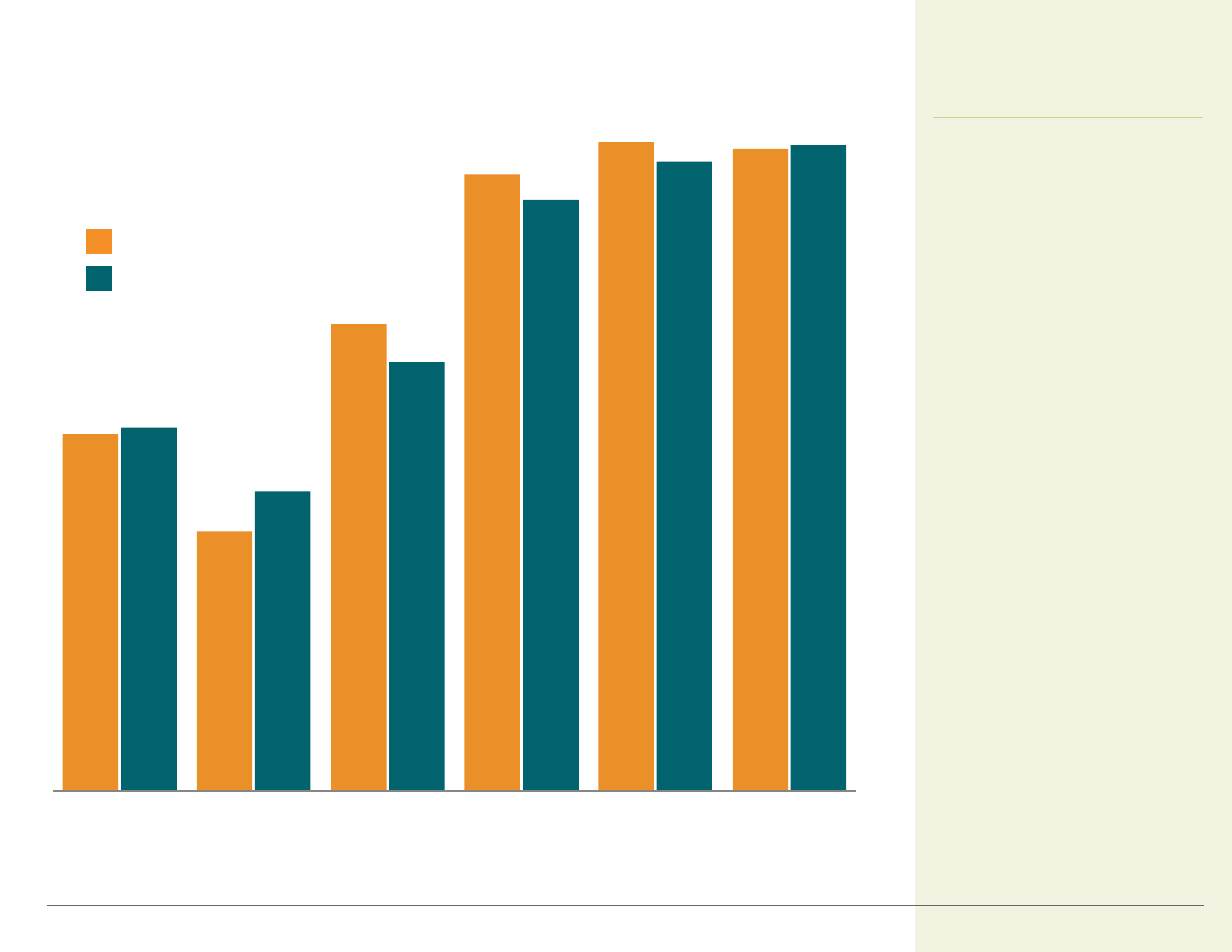
*Estimates are statistically different betw een California and US.
Sources: California Employer Health Benefits Survey: 2016, CHCF/NORC; author analysis of Survey of Employer-Sponsored Health Benefits public use file: 2016, Kaiser/HRET.
6
© 2 0 1 7 C A LIFOR NI A H E ALTH CARE FO U N D AT ION
California’s smallest employers
(three to nine workers) were
much less likely to offer coverage
than larger firms. Less than half
(40%) of California's smallest
firms offered coverage in 2016,
compared to 53% in 2011 (not
shown). Offer rates for California
were similar to those nationwide.
Employers Offering Coverage, by Firm Size
California
United States
California vs. United States, 2016
55%
40%
72%
95%
100%
99%
56%
46%
66%
91%
97%
100%
All Firm Sizes 3-9 10-49 50-199 200-999* 1,000+
California Employer Health Benefits
Coverage Availability
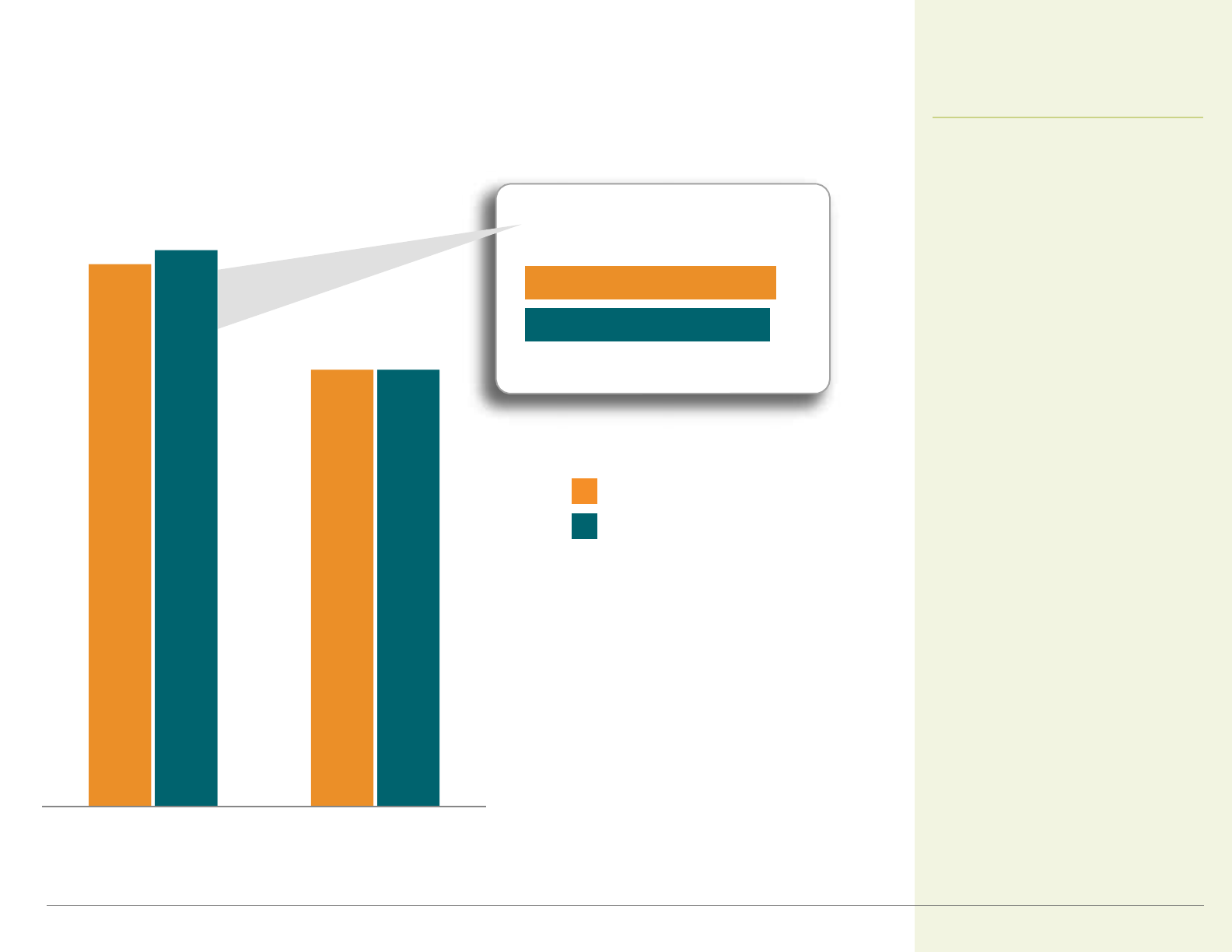
California
United States
Eligible Workers Who…
Take Up Coverage
80%
Note: Tests found no statistically different estimates betw een California and US.
Sources: California Employer Health Benefits Survey: 2016, CHCF/NORC; Survey of Employer-Sponsored Health Benefits: 2016, Kaiser/HRET.
7
© 2 0 1 7 C A LIFOR NI A H E ALTH CARE FO U N D AT ION
Not all employees are eligible
for health insurance offered by
their firm, and not all who are
eligible elect to participate.
Seventy-seven percent of
people working in California
firms offering coverage were
eligible for health benefits. Of
those eligible, 81% elected to
enroll, resulting in a 62%
coverage rate.
Employee Eligibility, Take-Up Rates, and Coverage
79%
81%
California vs. United States, 2016
77%
62%
79%
62%
Eligible Workers Covered Workers
California Employer Health Benefits
Coverage Availability
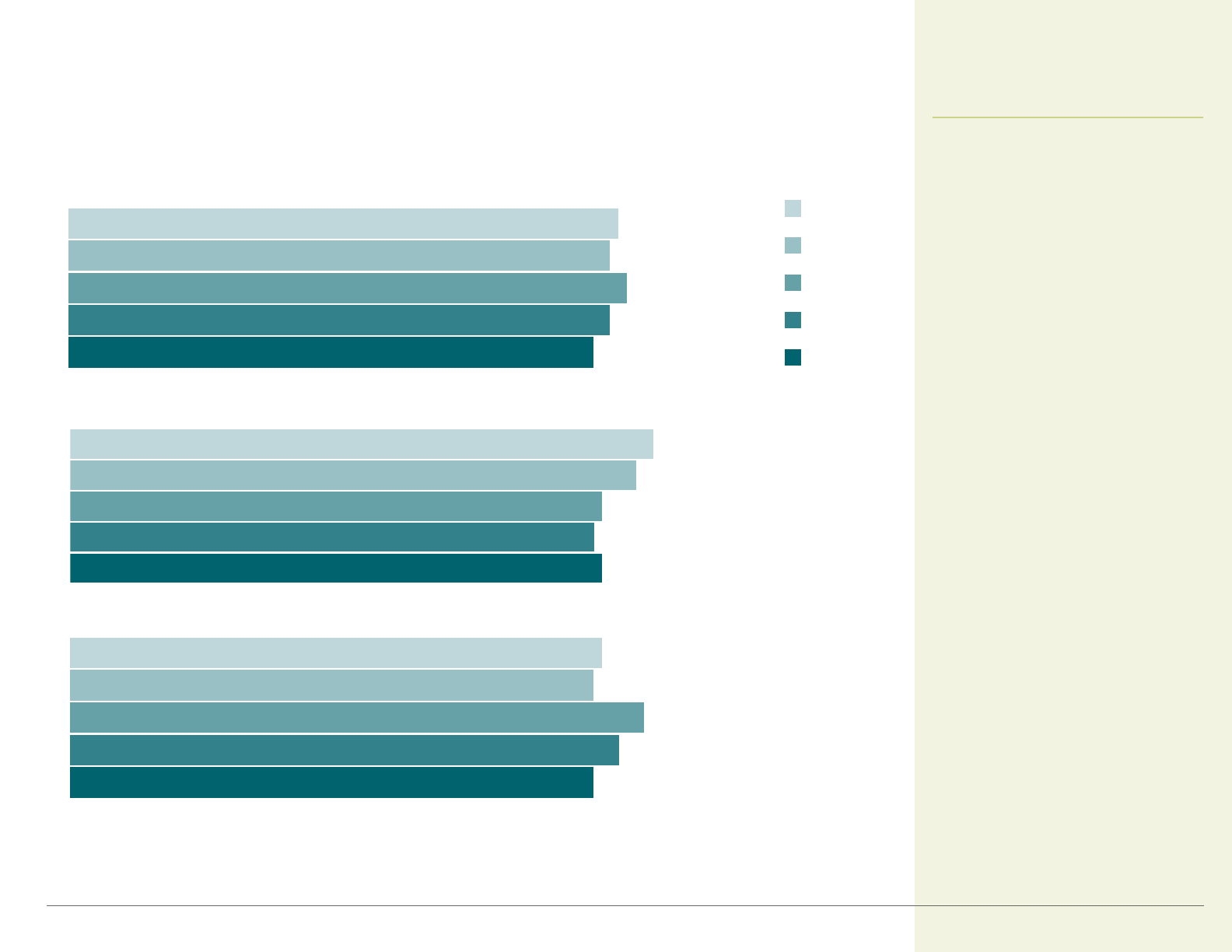
62%
64%
66%
64%
65%
All Firms
Note: Tests found no statistically different estimates from previous year shown within firm size.
Source: California Employer Health Benefits Survey: 2008-2016, CHCF/NORC.
8
© 2 0 1 7 C A LIFOR NI A H E ALTH CARE FO U N D AT ION
65%
Worker Coverage Rates Among Firms Offering Health
Benefits
Insurance coverage rates
among California employers
offering health benefits have
been fairly stable since
2008, with year-to-year
changes not statistically
significant. Large and small
firms had comparable
coverage rates.
2008
2010
2012
2014
2016
63%
62%
63%
67%
69%
Small Firms (3-199 workers)
62%
65%
68%
62%
63%
Large Firms (200+ workers)
by Firm Size, 2008 to 2016, Selected Years
California Employer Health Benefits
Coverage Availability
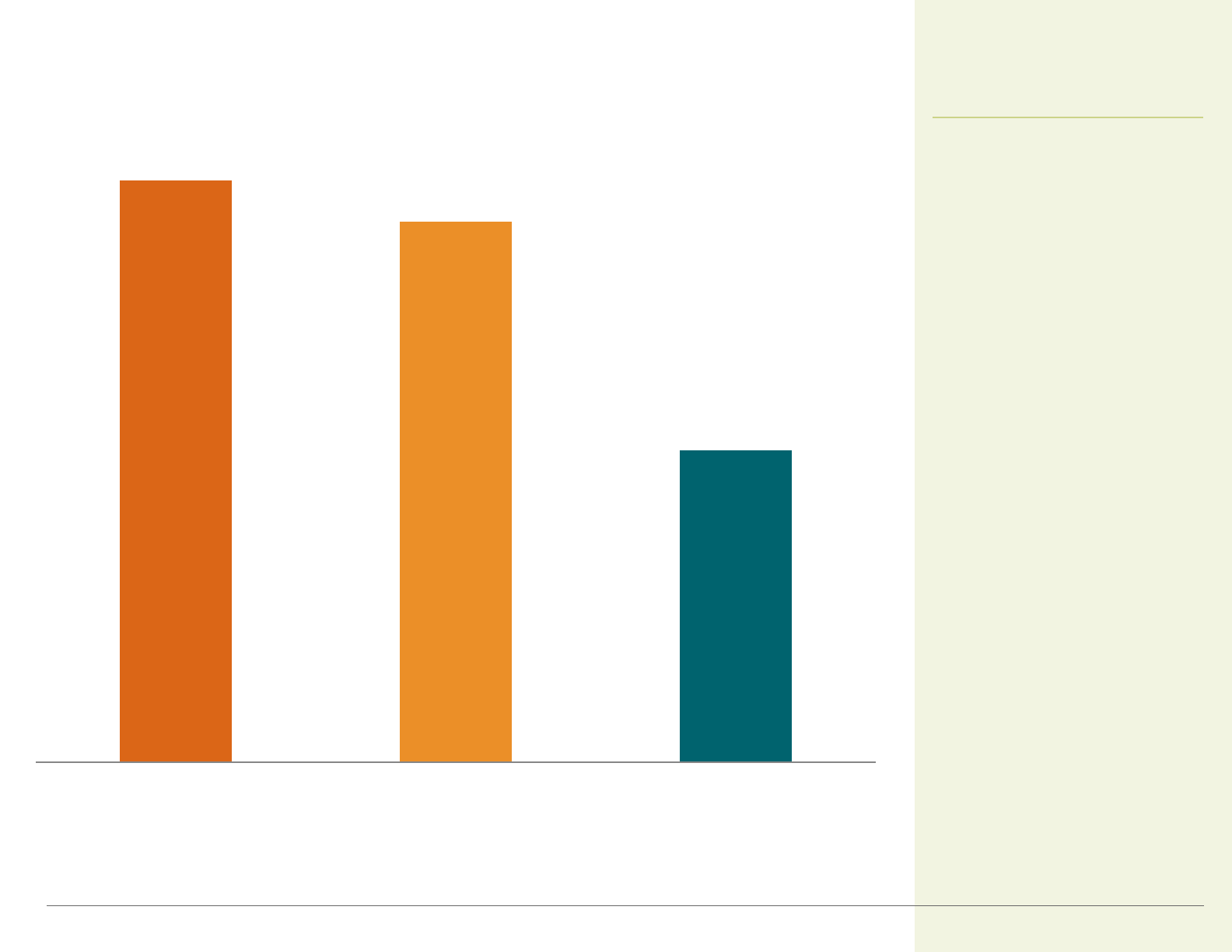
Sources: California Employer Health Benefits Survey: 2016, CHCF/NORC; Survey of Employer-Sponsored Health Benefits: 2016, Kaiser/HRET.
9
© 2 0 1 7 C A LIFOR NI A H E ALTH CARE FO U N D AT ION
Average Increases in Premiums, Family Coverage
Among California firms that
offered the same health plan
or plans in 2015 and 2016
(fixed enrollment), the
average premium increase
for family coverage was
5.6%. For those firms that
changed plans or had
workers who switched plans
(variable enrollment), the
average family premium
increase was 5.2%.
Fixed vs. Variable Enrollment, California vs. United States, 2016
5.6%
5.2%
3.0%
California
(fixed enrollment)
California
(variable enrollment)
United States
(variable enrollment)
Cost of Health Insurance
California Employer Health Benefits
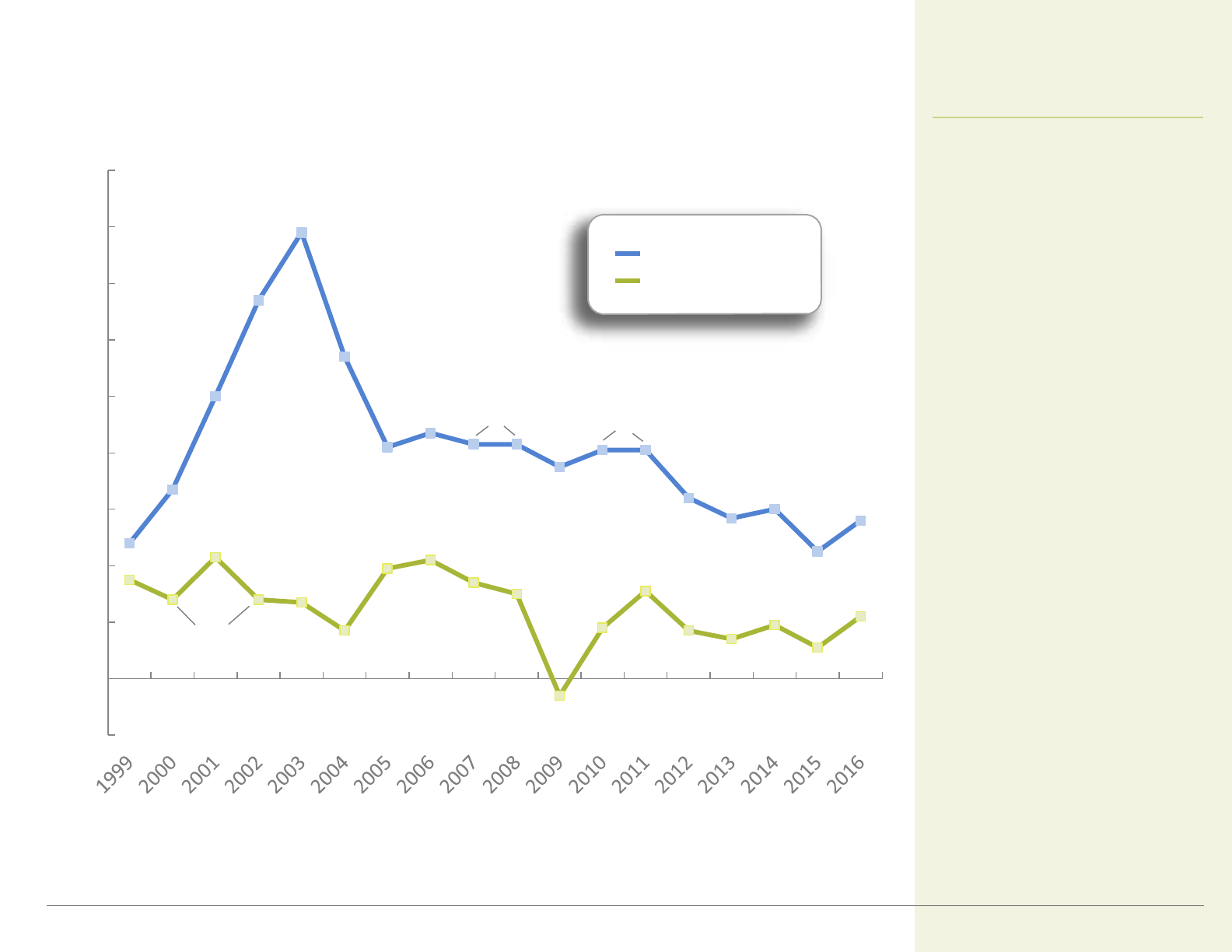
4.8%
6.7%
10.0%*
13.4%*
15.8%*
11.4%*
8.2%*
8.7%
8.3%
7.5%
8.1%
6.4%*
5.7%
6.0%
4.5%*
5.6%
3.5%
2.8%
4.3%
2.7%
1.7%
3.9%
4.2%
3.4%
3.0%
-0.6%
1.8%
3.1%
1.7%
1.4%
1.9%
1.1%
2.2%
-2%
0%
2%
4%
6%
8%
10%
12%
14%
16%
18%
Premiums
Overall Inflation
Sources: California Employer Health Benefits Survey: 2007-2016, CHCF/NORC; California Employer Health Benefits Survey: 2005-2006, CHCF/HSC; California Employer Health Benefits
Survey: 2004, CHCF/HRET; California Employer Health Benefits Survey : 1999-2003, Kaiser/HRET; California Average of Annual Inflation (April to April): 1999-2016, California Division of
Labor Statistics and Research.
10
© 2 0 1 7 C A LIFOR NI A H E ALTH CARE FO U N D AT ION
*Estimates are statistically different from the previous year shown.
Annual Premium Growth Compared to Inflation
Health insurance premiums
for family coverage in
California grew by 5.6% in
2016. While modest by
historic standards,
premiums continued to rise
faster than the California
rate of inflation.
Family Coverage, 1999 to 2016
Cost of Health Insurance
California Employer Health Benefits
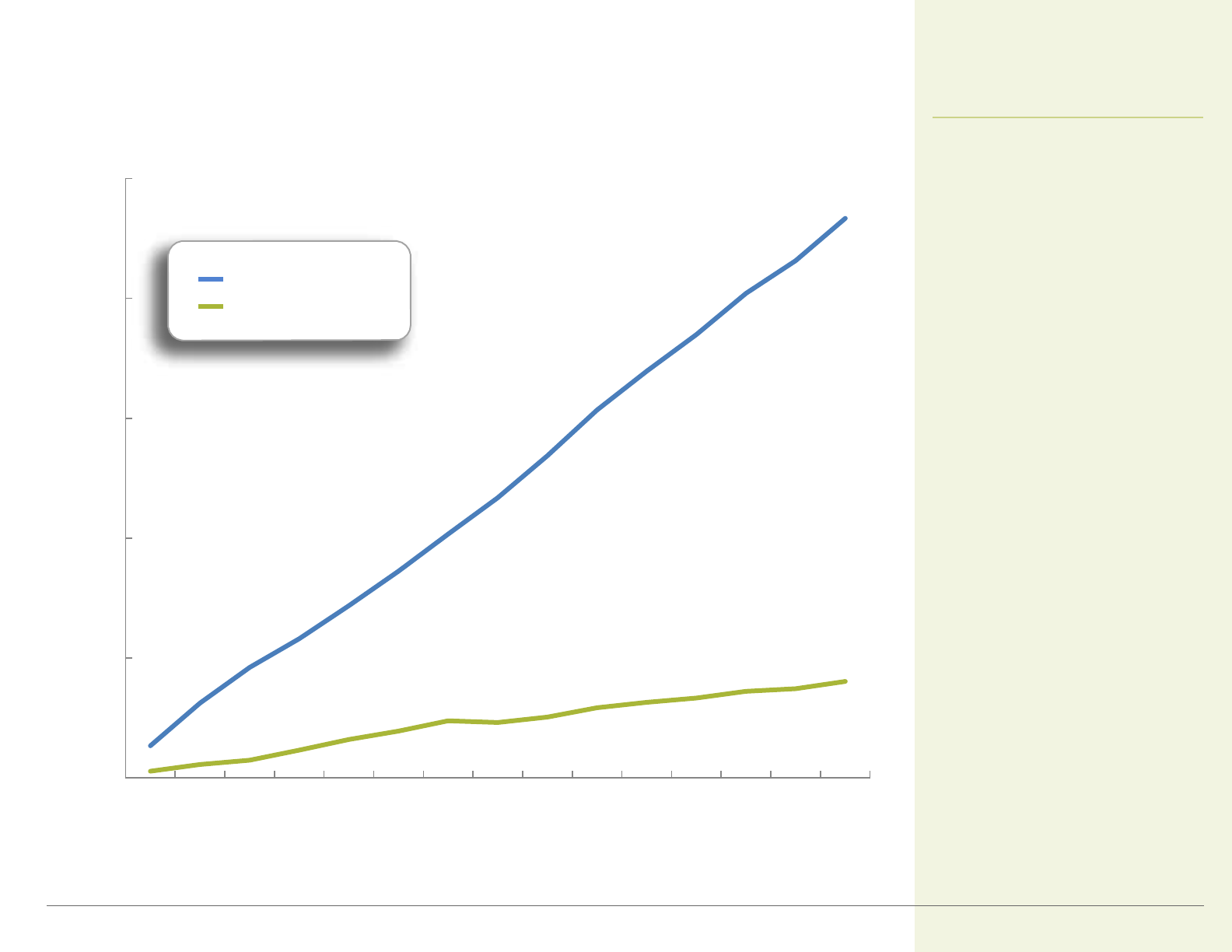
Premiums
Overall Inflation
Sources: California Employer Health Benefits Survey: 2007-2016, CHCF/NORC; California Employer Health Benefits Survey: 2005-2006, CHCF/HSC; California Employer Health Benefits
Survey: 2004, CHCF/HRET; California Employer Health Benefits Survey : 1999-2003, Kaiser/HRET; California Average of Annual Inflation (April to April): 2002-2016, California Division of
Labor Statistics and Research.
11
© 2 0 1 7 C A LIFOR NI A H E ALTH CARE FO U N D AT ION
Cumulative Premium Growth Compared to Inflation
Since 2002, health
insurance premiums in
California have increased by
234%, nearly six times the
increase in the state’s
overall inflation rate.
13.4%
233.5%
2.8%
40.2%
0%
50%
100%
150%
200%
250%
2002 2003 2004 2005 2006 2007 2008 2009 2010 2011 2012 2013 2014 2015 2016
Family Coverage, California, 2002 to 2016
Cost of Health Insurance
California Employer Health Benefits
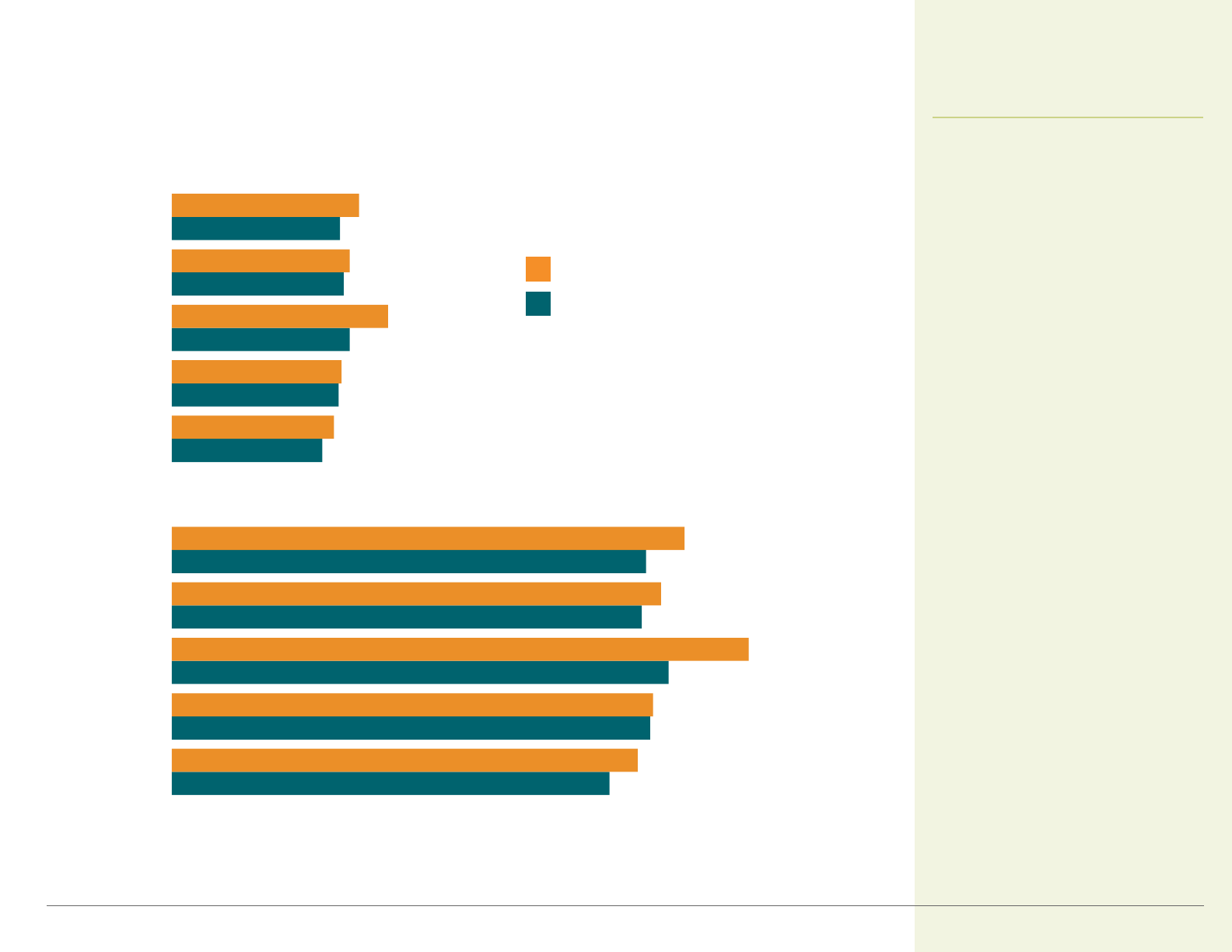
Notes: POS means poi nt-of-service plan. HDHP/SO means high-deductible plan with savings option. HDHPs have a deductible of at least $1,000 for single coverage and at least
$2,000 for family coverage.
Sources: California Employer Health Benefits Survey: 2016, CHCF/NORC; Employer Health Benefits Survey: 2016, Kaiser/HRET.
12
© 2 0 1 7 C A LIFOR NI A H E ALTH CARE FO U N D AT ION
*Estimates are statistically different betw een California and US.
Average Monthly Premiums, by Plan Type
Overall average monthly
premiums for single and
family coverage were
significantly greater in
California than nationally.
Differences in plan design
may account for some of
the differences.
California vs. United States, 2016
California
United States
$1,395
$1,525
$1,584
$1,498
$1,512
$480
$532
$567
$548
$536
$1,485
$1,534
$1,839
$1,559
$1,634
$517
$541
$689
$567
$597
HDHP/SO
POS
PPO
HMO
All Plans
HDHP/SO
POS
PPO
HMO
All Plans
Family Coverage
Single Coverage
*
*
*
*
Cost of Health Insurance
California Employer Health Benefits
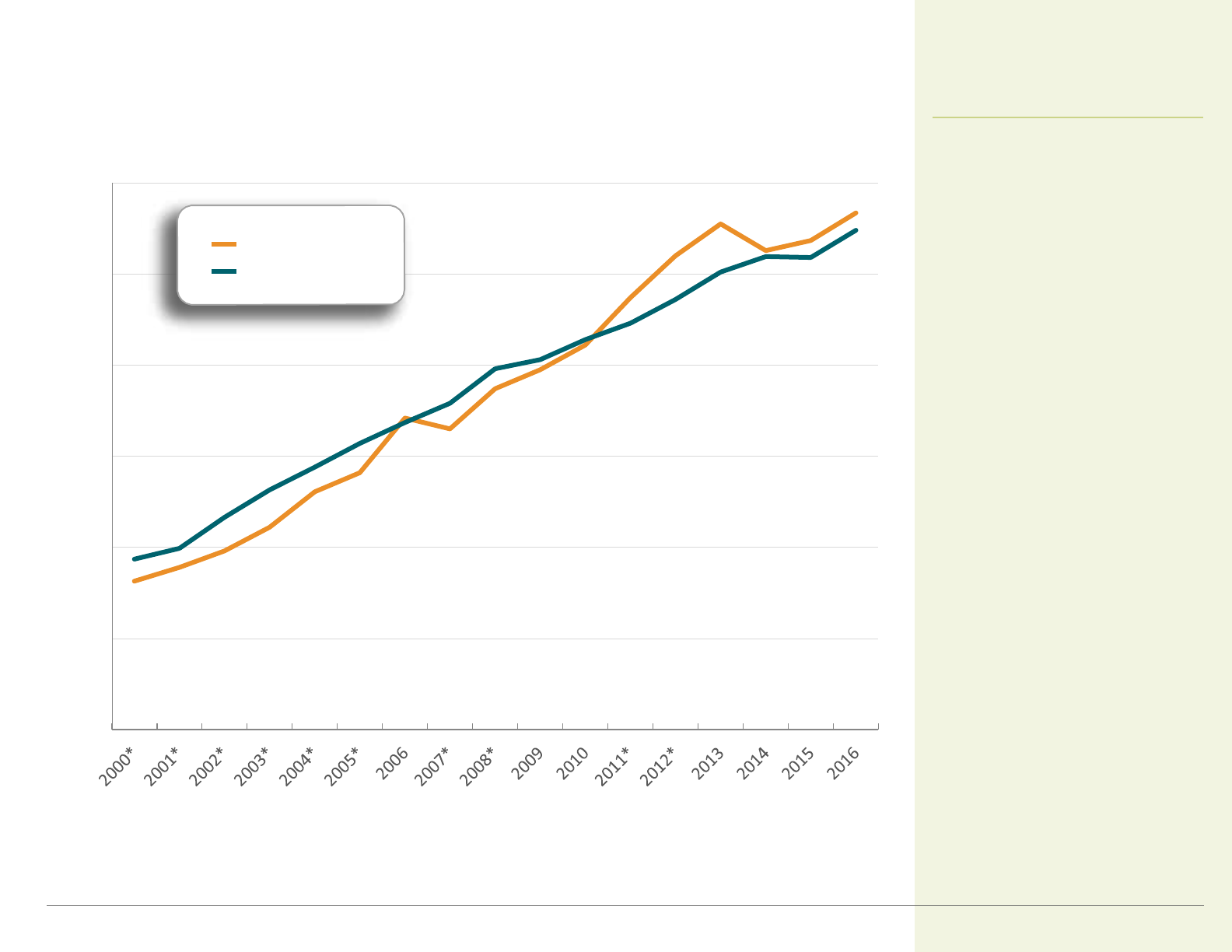
$163
$567
$187
$548
$0
$100
$200
$300
$400
$500
$600
*Estimates are statistically different between California and US.
Notes: Annual rate of change for HMO single premiums should not be calculated by comparing dollar values from one year with t he previous year, due to both the survey’s sampling
design and the way in which plan information is collected. Rates of change in family premiums are collected directly as a que stion in the survey (no change data for single premiums
are collected).
Sources: California Employer Health Benefits Survey: 2007-2016, CHCF/NORC; California Employer Health Benefits Survey: 2005-2006, CHCF/HSC; California Employer Health Benefits
Survey: 2004, CHCF/HRET; California Employer Health Benefits Survey : 2000-2003, Kaiser/HRET; Employer Health Benefits Survey: 2000-2016, Kaiser/HRET.
13
© 2 0 1 7 C A LIFOR NI A H E ALTH CARE FO U N D AT ION
California
United States
Average Monthly HMO Premiums, Single Coverage
From 2000 to 2010,
California's average monthly
HMO premium for single
coverage stayed below that
of the US. In 2011, however,
it exceeded the national
rate. In 2016, California's
single HMO premium was
similar to the national figure.
California, 2000 to 2016
Cost of Health Insurance
California Employer Health Benefits
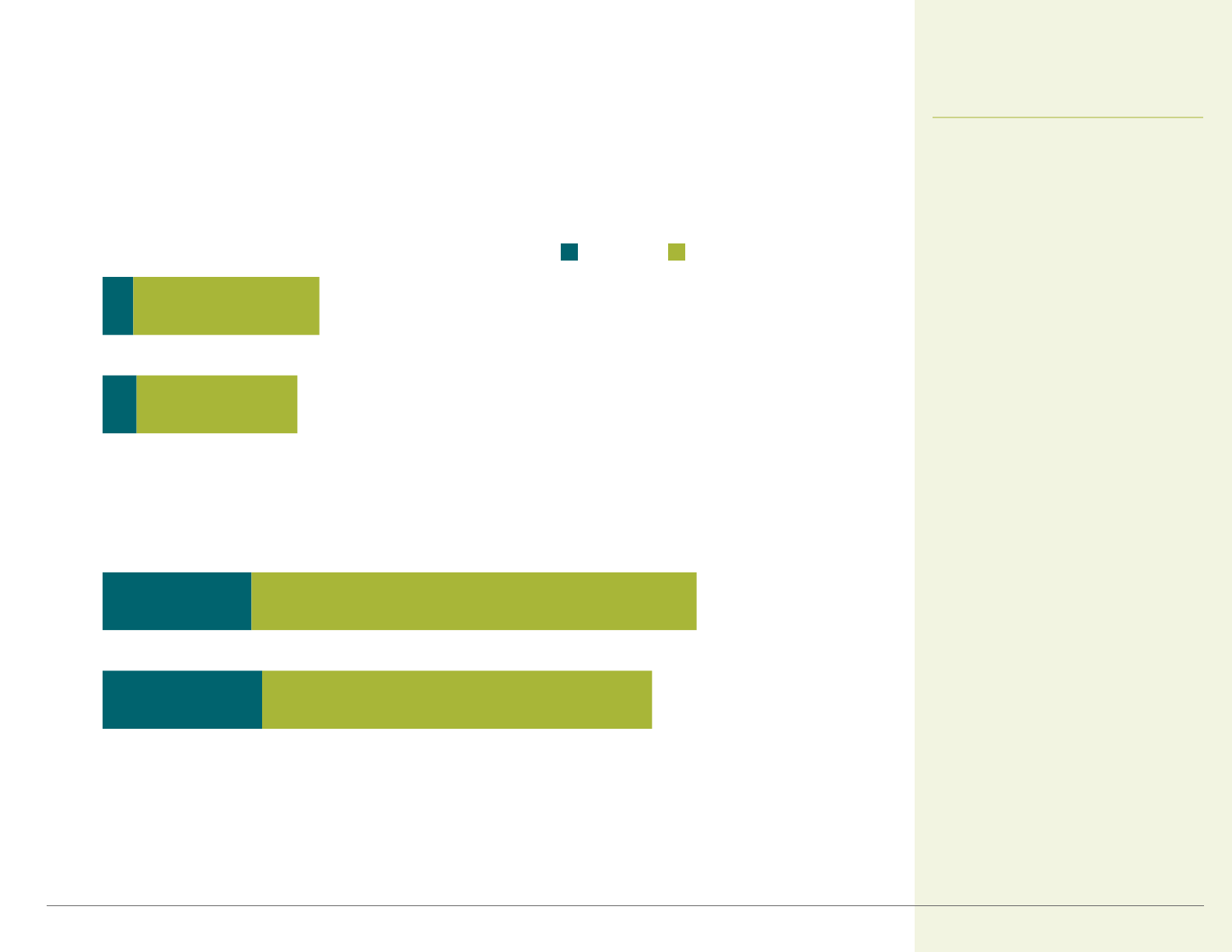
*Estimates are statistically different betw een California and US within coverage type.
Note: Segments may not add to totals due to roun di n g.
Sources: California Employer Health Benefits Survey: 2016, CHCF/NORC; Employer Health Benefits Survey: 2016, Kaiser/HRET.
14
© 2 0 1 7 C A LIFOR NI A H E ALTH CARE FO U N D AT ION
Contribution by:
Worker Employer
Annual Worker and Employer Premium Contributions
California workers
contributed an average of
$1,020 annually for single
coverage and $4,918 for
family coverage in 2016.
Employer contributions to
single and family premiums
were higher in California
than nationally.
$5,277*
$4,918*
$1,129*
$1,020*
$12,865*
$14,693*
$5,306*
$6,141*
US
CA
US
CA
$7,161*
$6,435
$19,612*
$18,142
Family Coverage
Single Coverage
California vs. United States, 2016
Cost of Health Insurance
California Employer Health Benefits
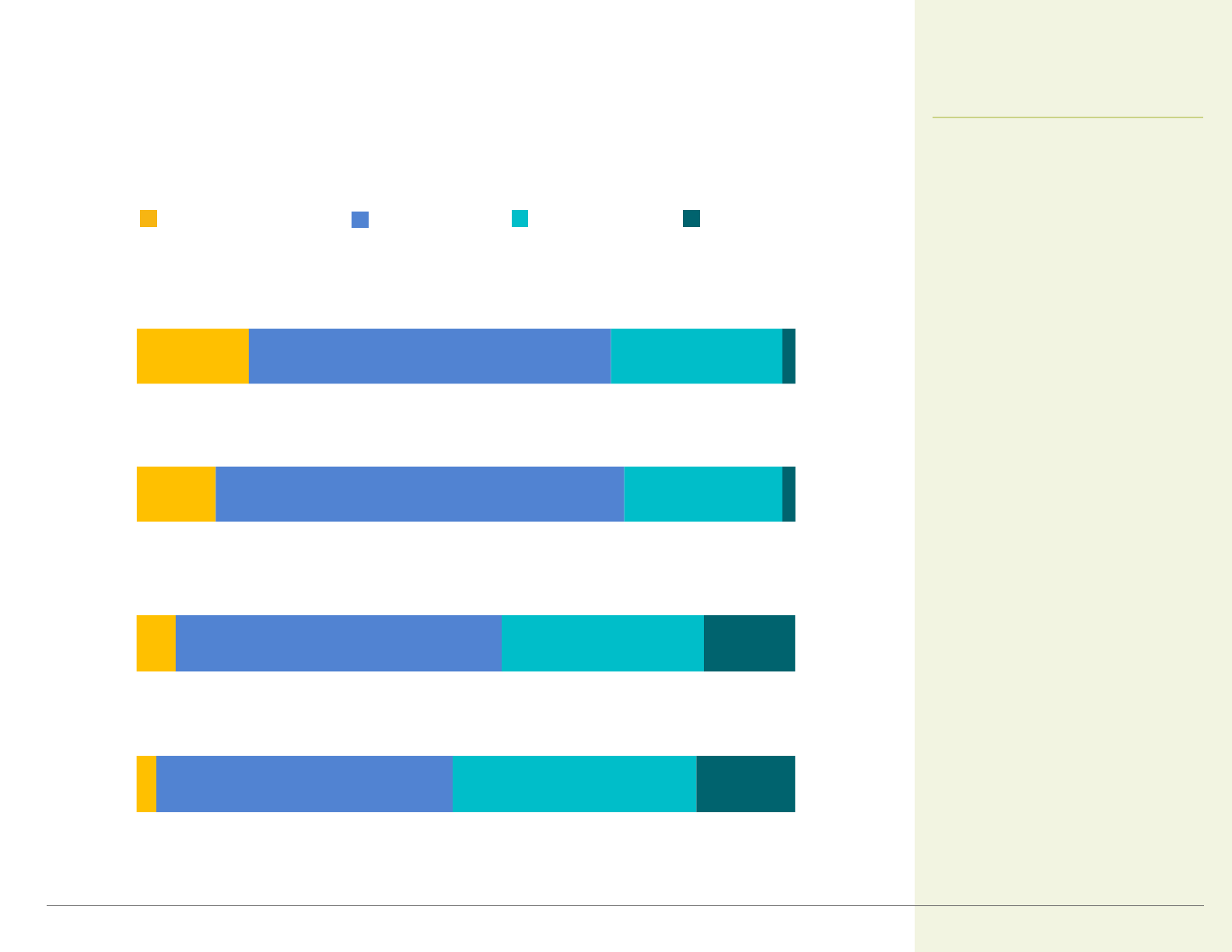
12%
17%
62%
55%
24%
26%
2%
2%
US
CA
Single Coverage
15
© 2 0 1 7 C A LIFOR NI A H E ALTH CARE FO U N D AT ION
No Contribution 1%-25% 26%-50% 51%+
Worker Share of Premium
The distribution of the
percentage of the premium
paid by workers was similar
for California and the
nation.
California vs. United States, 2016
3%
6%
45%
50%
37%
31%
15%
14%
US
CA
Family Coverage
Notes: Segments may not add to 100% due to rounding. Tests found no statistically different estimates between California and US.
Sources: California Employer Health Benefits Survey: 2016, CHCF/NORC; Employer Health Benefits Survey: 2016, Kaiser/HRET.
Cost of Health Insurance
California Employer Health Benefits

12%
27%
17%
64%
37%
55%
23%
32%
26%
1%
4%
2%
Large
Firms*
Small
Firms*
All Firms
Single Coverage
(3-199 workers)
(200+ workers)
*Difference is statistically different betw een small and large firms within coverage type.
Note: Segments may not add to 100% due to rounding .
Source: California Employer Health Benefits Survey: 2016, CHCF/NORC.
16
© 2 0 1 7 C A LIFOR NI A H E ALTH CARE FO U N D AT ION
No Contribution 1%-25% 26%-50% 51%+
Worker Share of Premium, by Firm Size
Workers’ share of premium
differs significantly by size
of firm. For single coverage,
about one in four workers in
small firms did not have to
contribute to the premium,
compared to one in eight
workers in large firms. For
family coverage, 28% of
workers in small firms pay
more than half of the
premium, compared to only
7% of workers in large
firms.
3%
11%
6%
64%
22%
50%
26%
39%
31%
7%
28%
14%
Large
Firms*
Small
Firms*
All Firms
Family Coverage
(3-199 workers)
(200+ workers)
California, 2016
Cost of Health Insurance
California Employer Health Benefits
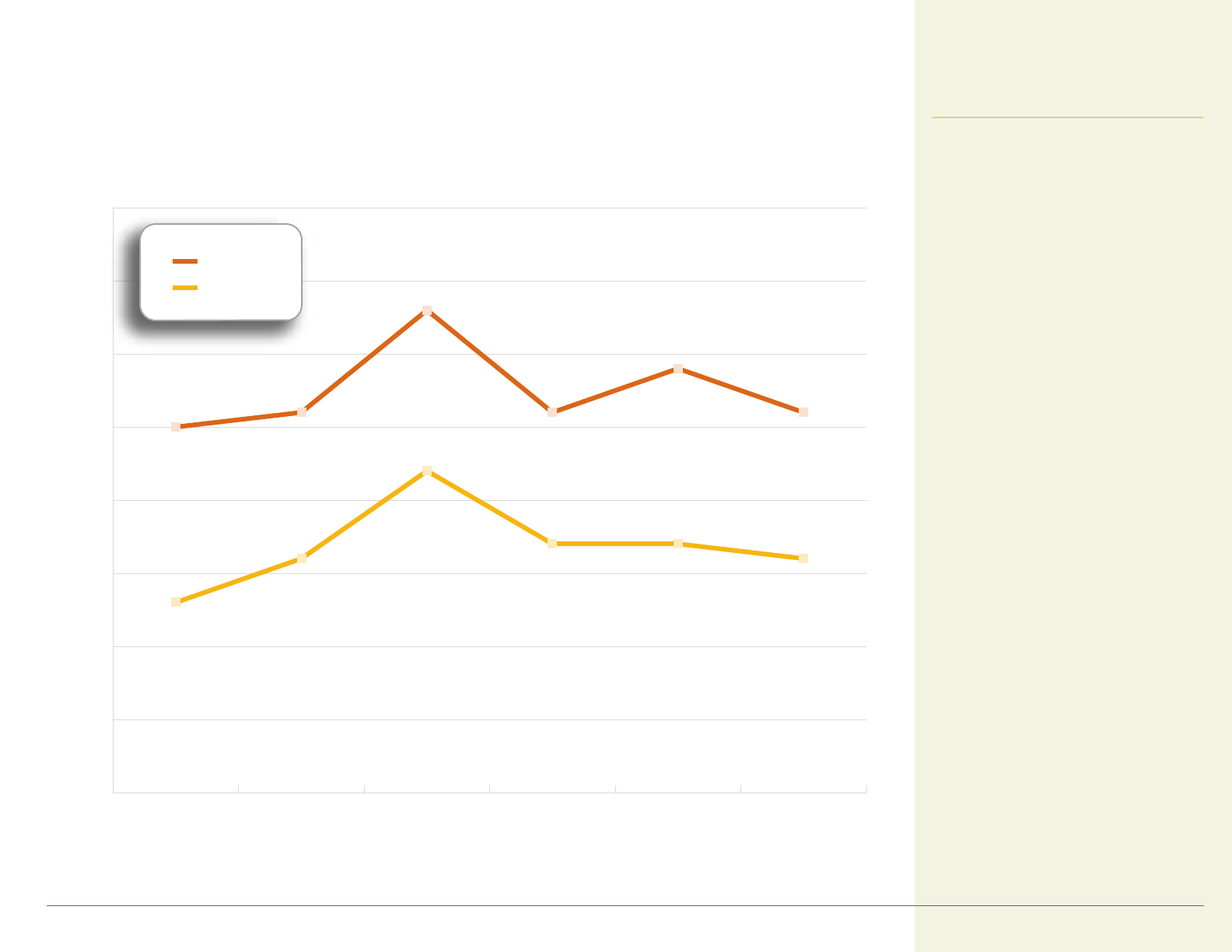
*Estimates are significantly different from previous year shown.
Source: California Employer Health Benefits Survey: 2011-2016, CHCF/NORC.
17
© 2 0 1 7 C A LIFOR NI A H E ALTH CARE FO U N D AT ION
Worker Share of Premium, Single and Family
Coverage
California workers paid an
average of 16% of the total
premium for single coverage
and 26% for family coverage
in 2016. The corresponding
annual premium
contributions were $1,020
and $4,918 for single and
family, respectively (not
shown).
13%
16%
22%
17% 17%
16%
25%
26%
33%
26%
29%
26%
0%
5%
10%
15%
20%
25%
30%
35%
40%
2011 2012 2013 2014 2015 2016
Family
Single
California, 2011 to 2016
*
*
*
*
Cost of Health Insurance
California Employer Health Benefits

$5 $10 $15
•
$20
•
$25
•
$30
Other
Notes: Tests found no statistically different estimates from previous year shown within coverage type. POS means point-of-service plan. Segments m ay not add to 100% due to
roundin g.
Source: California Employer Health Benefits Survey: 2012-2016, CHCF/NORC.
18
© 2 0 1 7 C A LIFOR NI A H E ALTH CARE FO U N D AT ION
PER VISIT COPAY
Workers with Office Visit Copayments
The percentage of workers
with a copayment of $10 or
less declined from 18% in
2012 to 9% in 2016.
California, 2012 to 2016
1%
1%
1%
1%
8%
6%
10%
8%
18%
12%
13%
19%
15%
20%
39%
44%
42%
44%
33%
15%
13%
9%
13%
13%
14%
12%
11%
11%
10%
10%
10%
8%
8%
6%
2016
2015
2014
2013
2012
Benefits and Cost Sharing
California Employer Health Benefits
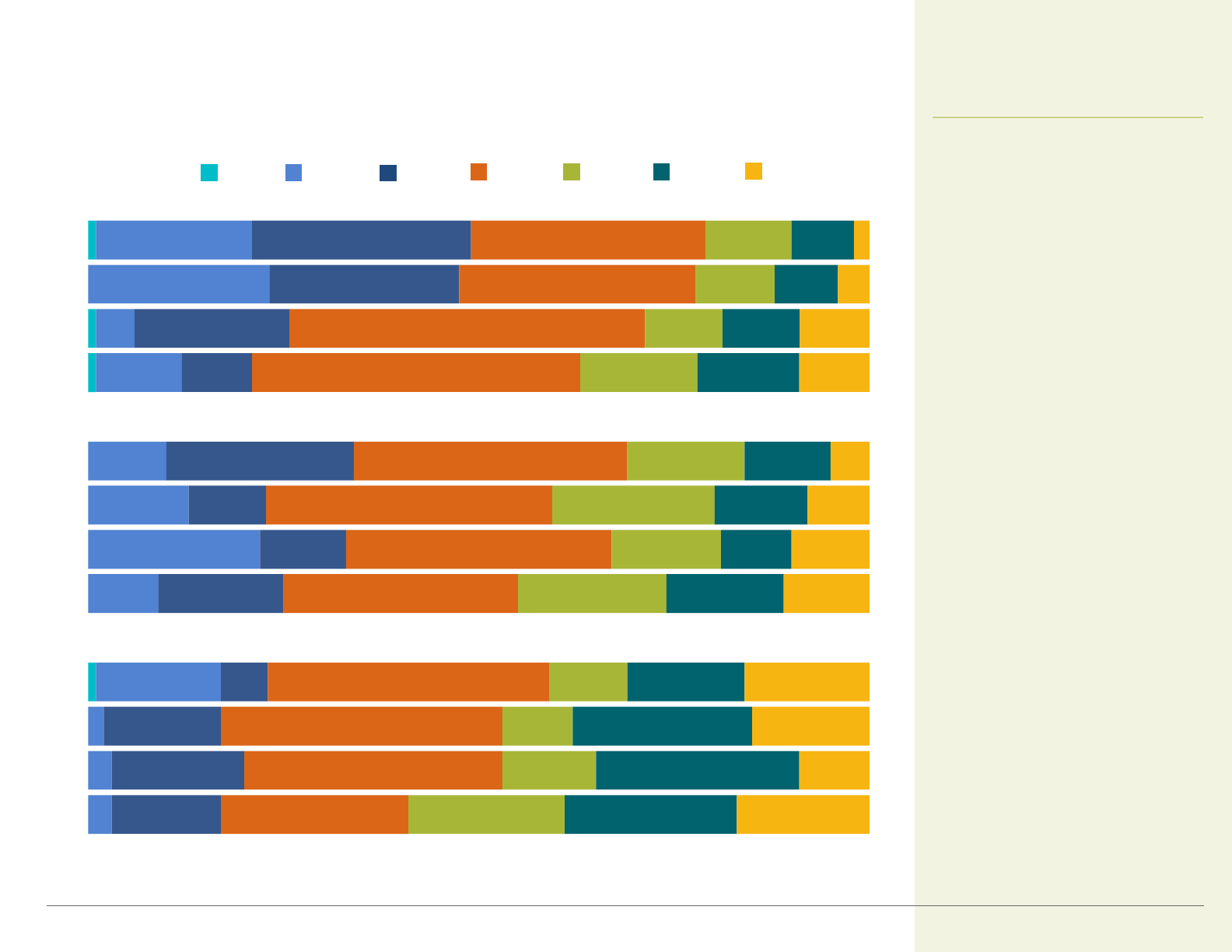
1%
1%
1%
1%
3%
3%
2%
16%
9%
22%
13%
10%
11%
5%
23%
20%
14%
17%
15%
6%
16%
11%
10%
24%
9%
20%
24%
28%
24%
33%
36%
36%
30%
34%
37%
35%
42%
46%
30%
30%
20%
12%
9%
10%
19%
14%
21%
15%
15%
10%
10%
11%
22%
26%
23%
15%
15%
9%
12%
11%
13%
10%
8%
8%
17%
9%
15%
16%
11%
10%
8%
5%
9%
9%
4%
2%
2016
2014
2012
2010
2016
2014
2012
2010
2016
2014
2012
2010
HMO
PPO (in-network)
POS (in network)
$5 $10 $15
•
$20
•
$25
•
$30
Other
Notes: Tests found no statistically different estimates from previous year shown within coverage type. POS means point-of-service plan. Segments m ay not add to 100% due to
roundin g.
Source: California Employer Health Benefits Survey: 2010-2016, CHCF/NORC.
19
© 2 0 1 7 C A LIFOR NI A H E ALTH CARE FO U N D AT ION
PER VISIT COPAY
Workers with Office Visit Copayments, by Plan Type
The distribution of
copayments for primary care
office visits has shifted since
2010, with far fewer workers
having copayments of $5 or
$10. The most common
amount in 2016 was $20
across all types of plans.
California, 2010 to 2016, Selected Years
Benefits and Cost Sharing
California Employer Health Benefits
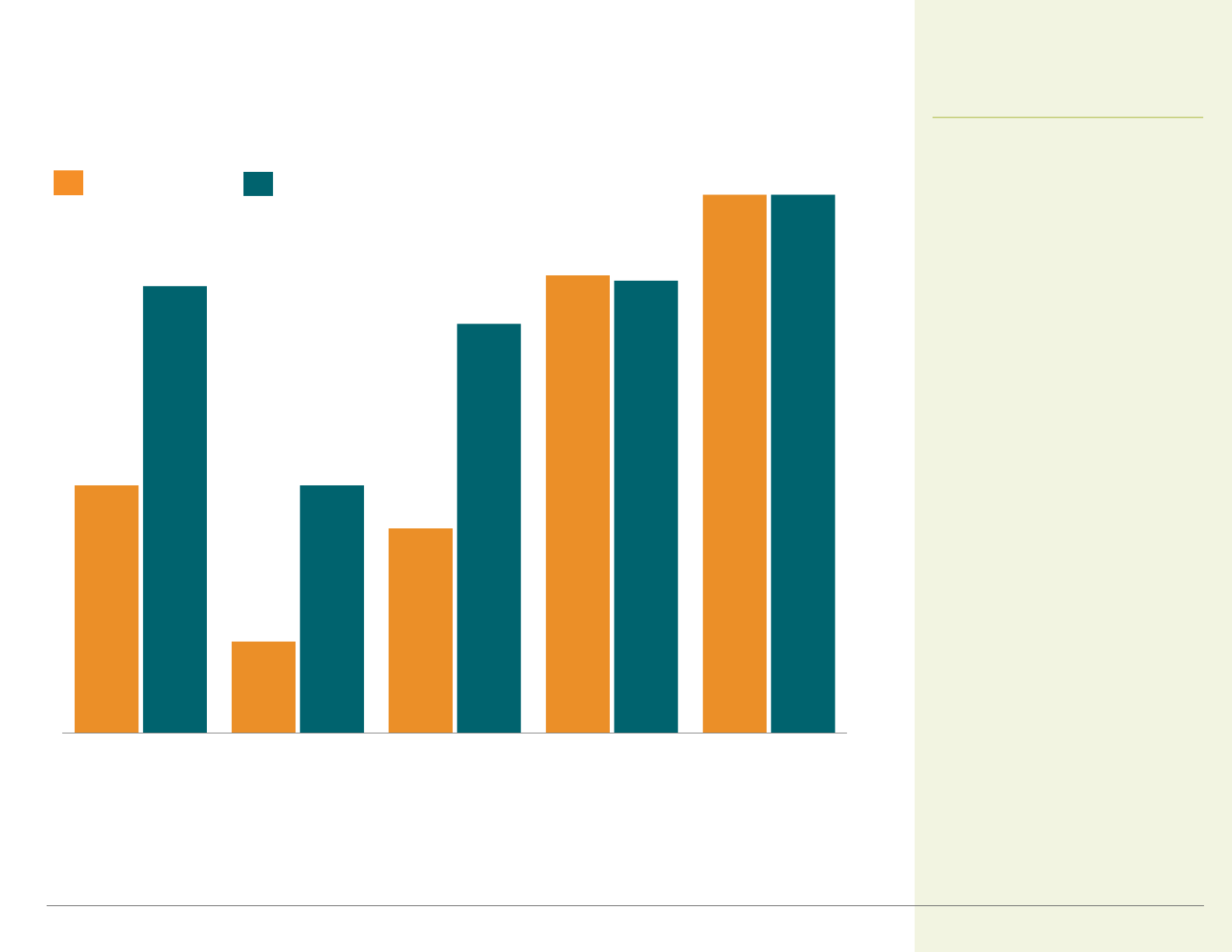
Notes: POS means poi nt-of-service plan. HDHP/SO means high-deductible plan with savings option. HDHPs have a deductible of at least $1,000 for single coverage. Dollar figures
represent average annual deductibles.
Sources: California Employer Health Benefits Survey: 2016 CHCF/NORC; Employer Health Benefits Survey: 2016, Kaiser/HRET.
20
© 2 0 1 7 C A LIFOR NI A H E ALTH CARE FO U N D AT ION
*Percentages are significantly different between California and US.
†Average deductibles are significantly different between California and U.S.
Workers with Annual Deductible, Single Coverage
California workers enrolled
in HMOs and POS plans
were less likely to have a
deductible in 2016 than
those in the nation as a
whole. The prevalence of
deductibles in other types of
plans was comparable.
by Plan Type, California vs. United States, 2016
46%
17%
38%
85%
100%
83%
46%
76%
84%
100%
All Plans HMO*† POS*†
(in-network)
PPO
(in-network)
HDHP/SO
$917
$933
$1,737
$736
$1,028
$2,297 $2,199
$1,180
$1,020
$1,478
California United States
Benefits and Cost Sharing
California Employer Health Benefits
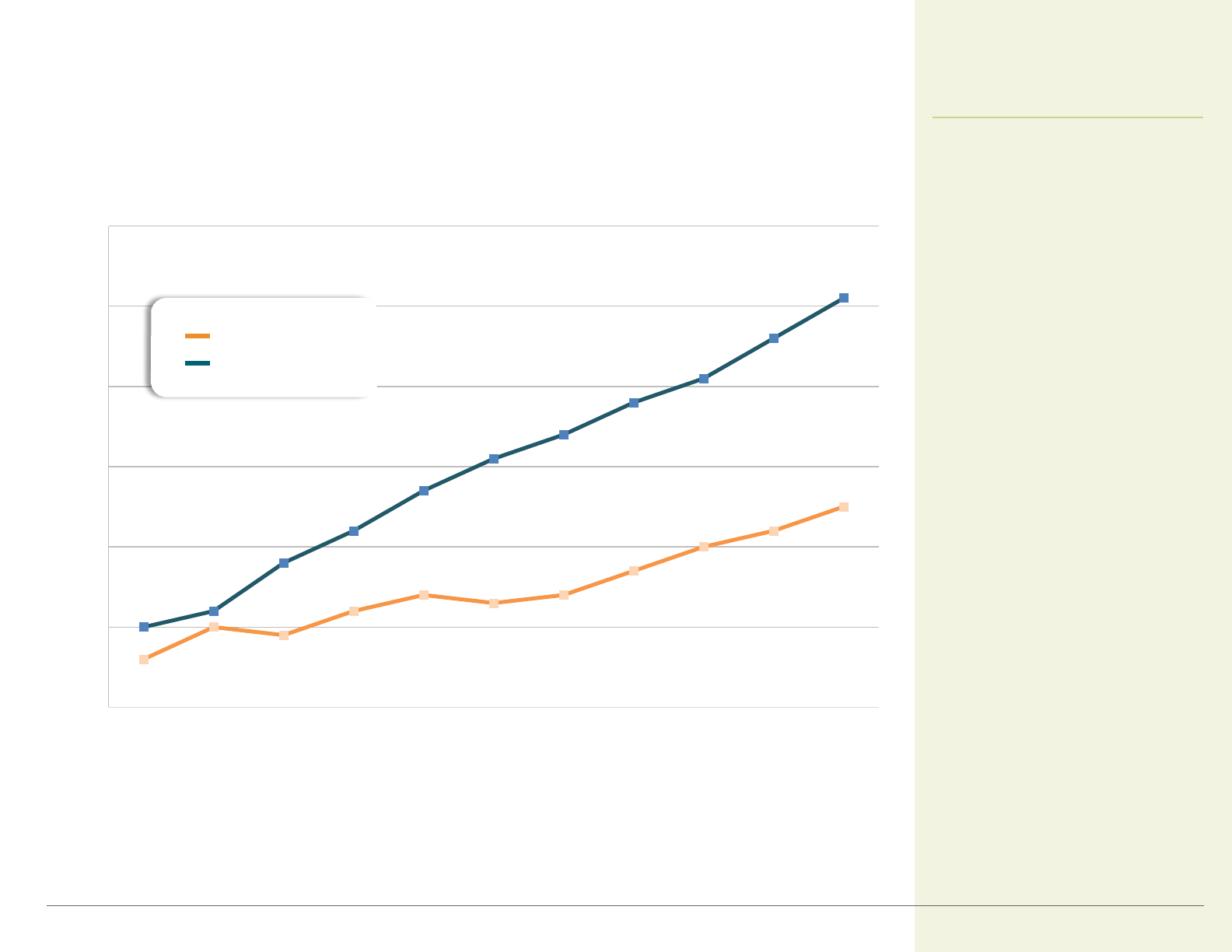
*Estimate is statistically different from previous year show n .
Sources: California Employer Health Benefits Survey: 2007-2016, CHCF/NORC; California Employer Health Benefits Survey: 2006, CHCF/HSC; Kaiser/HRET Survey of Employer-Sponsored
Benefits, 2006-2016.
21
© 2 0 1 7 C A LIFOR NI A H E ALTH CARE FO U N D AT ION
WorkerswithaLargeDeductible ($1,000+),
SingleCoverage
Workers in the United States
were more likely than those
In California to have a
deductible or $1,000 or
more. In 2016, one in two
workers nationally had a
large deductible compared
to one in four in California.
by Firm Size, California vs. United States, 2006 to 2016
6%
10%
9%
12%
14%
13%
14%
17%
20%
22%
25%
10%
12%
18%
22%
27%
31%
34%
38%
41%
46%
51%
0%
10%
20%
30%
40%
50%
60%
2006 2007 2008 2009 2010 2011 2012 2013 2014 2015 2016
California
United States
*
*
*
*
Benefits and Cost Sharing
California Employer Health Benefits
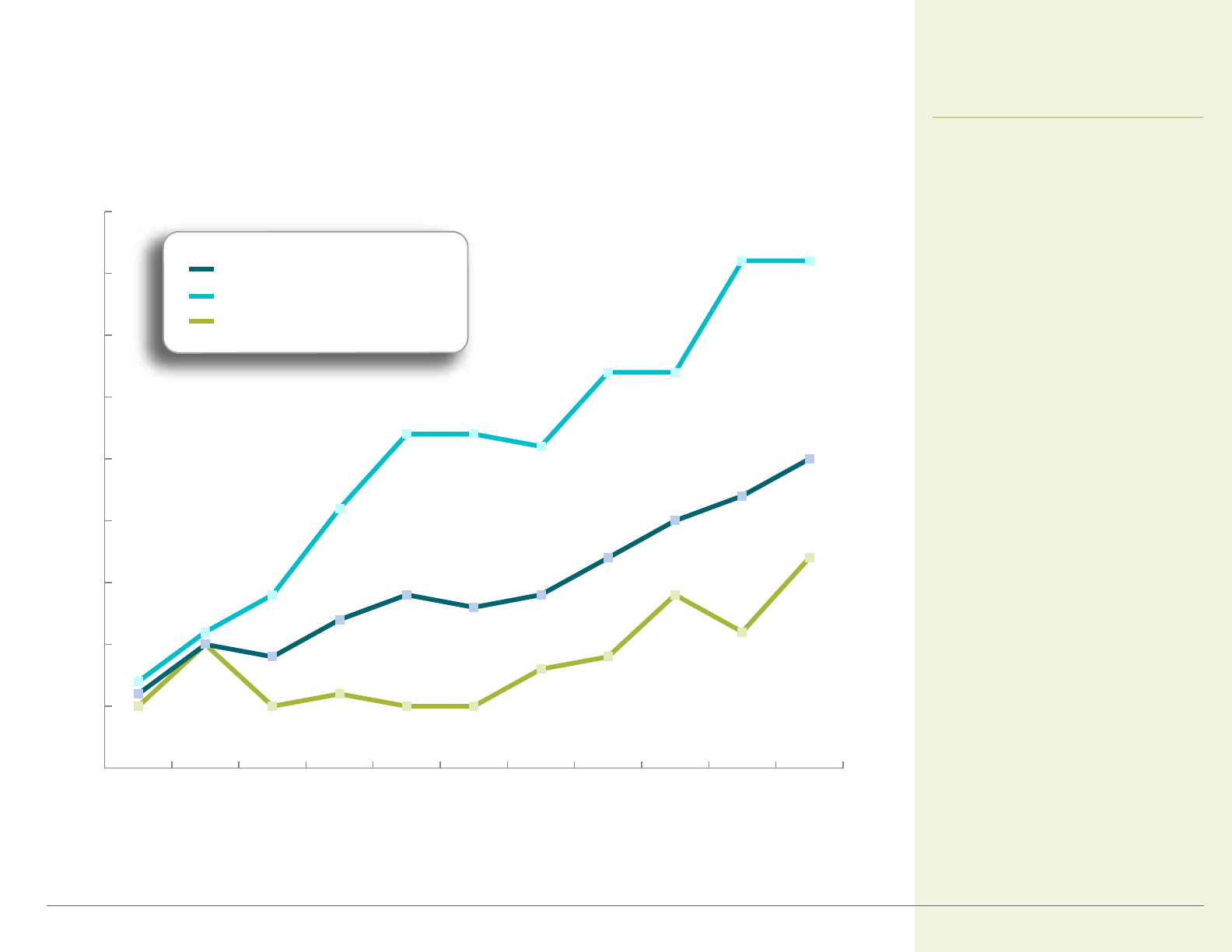
7%
11%
14%
21%*
27% 27%
26%
32% 32%
41% 41%
5%
10%
5%
6%
5% 5%
8%
9%
14%
11%
17%
6%
10%
9%
12%
14%
13%
14%
17%
20%
22%
25%
0%
5%
10%
15%
20%
25%
30%
35%
40%
45%
2006 2007 2008 2009 2010 2011 2012 2013 2014 2015 2016
All Firms
Small Firms (3-199 workers)
Large Firms (200+ workers)
*Estimate is statistically different from previous year shown by firm size.
Sources: California Employer Health Benefits Survey: 2007-2016, CHCF/NORC; California Employer Health Benefits Survey: 2006, CHCF/HSC.
22
© 2 0 1 7 C A LIFOR NI A H E ALTH CARE FO U N D AT ION
WorkerswithaLargeDeductible ($1,000+),
SingleCoverage
Large-deductible plans were
more common among small
firms. Forty-one percent of
workers in small firms (3-
199 workers) had an annual
deductible of $1,000 or
more for single coverage in
2016, compared to 17% in
large firms. The prevalence
of large-deductible plans in
small firms has increased
substantially since 2010.
by Firm Size, California, 2006 to 2016
Benefits and Cost Sharing
California Employer Health Benefits
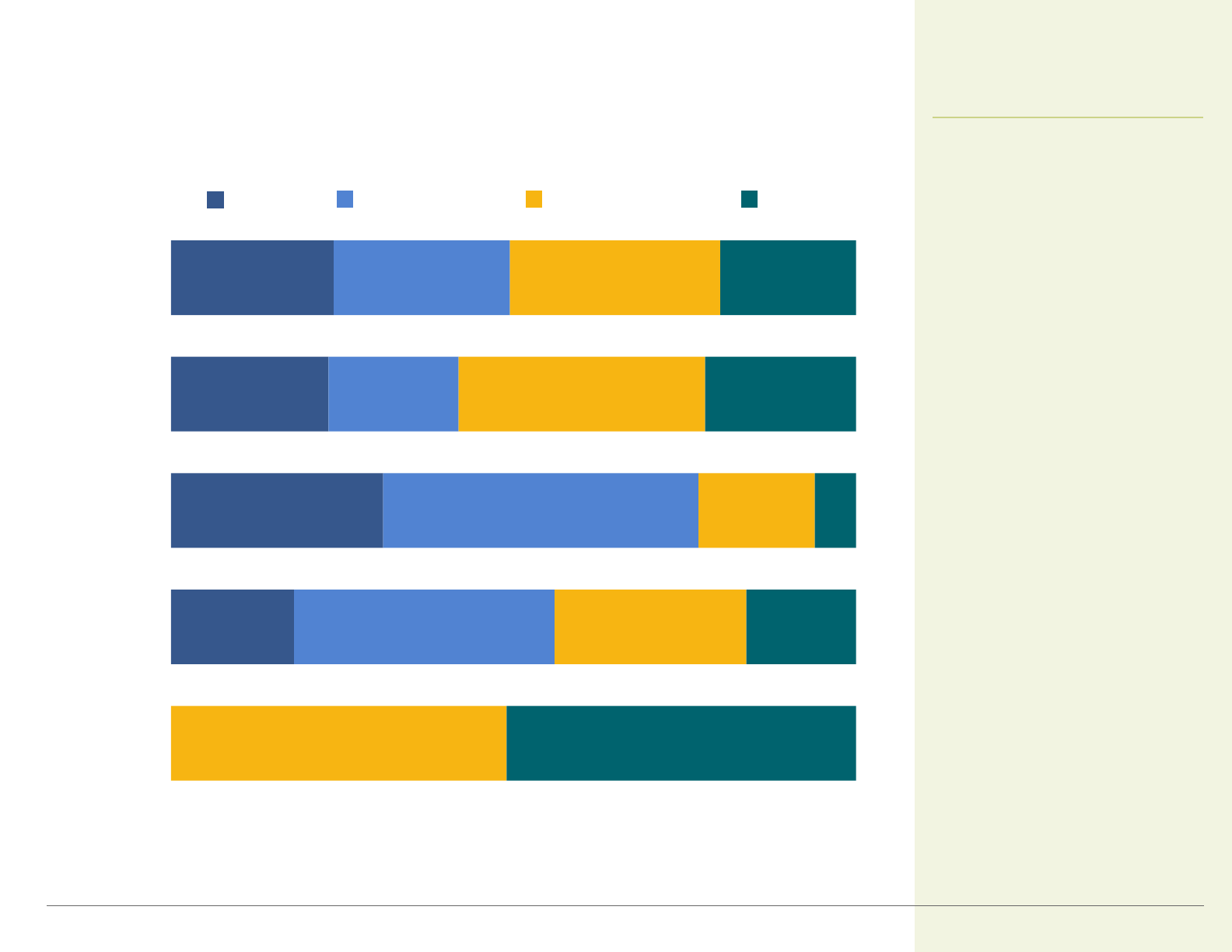
Source: California Employer Health Benefits Survey: 2016, CHCF/NORC.
23
© 2 0 1 7 C A LIFOR NI A H E ALTH CARE FO U N D AT ION
<$500 $500-$999 $1,000-$1,999 $2,000+
*Distribution is statistically different from All Plans.
Notes: Data based on w orkers with a deductible. POS means poin t-of-service plan. HDHP/SO means high-deductible plan with savings option. HDHPs have a deductible of at
least $1,000 for single coverage.
Deductibles for Single Coverage
Among California workers who
faced a deductible for single
coverage, over half (51%) had
a deductible of $1,000 or more,
and 20% had a deductible of
$2,000 or more.
by Plan Type, California, 2016
18%
31%
23%
24%
38%
46%
19%
26%
49%
28%
17%
36%
31%
51%
16%
6%
22%
20%
HDHP/SO*
POS
PPO*
HMO
All Plans
(in-network)
(in-network)
Benefits and Cost Sharing
California Employer Health Benefits
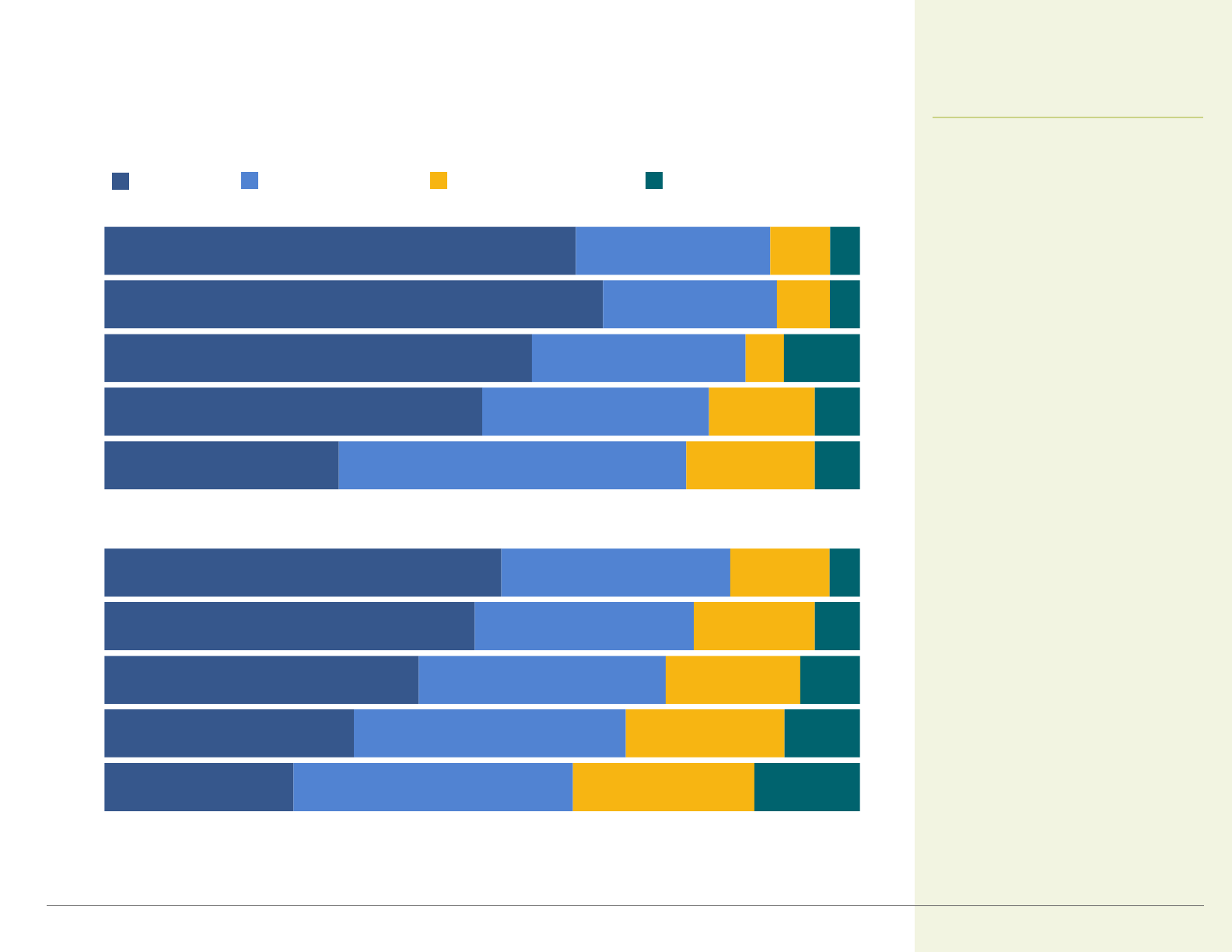
25%
33%
42%
49%
52%
31%
50%
56%
66%
63%
37%
36%
33%
29%
30%
46%
30%
28%
23%
26%
24%
21%
18%
16%
13%
17%
14%
5%
7%
8%
14%
10%
8%
6%
4%
6%
6%
10%
4%
4%
2016
2014
2012
2010
2008
2016
2014
2012
2010
2008
Note: Data based on workers with a deductible. Includes in-netw ork use only.
Sources: California Employer Health Benefits Survey: 2008-2016, CHCF/NORC; author analysis of Employer Health Benefits Survey public use files, 2008-2016, Kaiser/HRET.
24
© 2 0 1 7 C A LIFOR NI A H E ALTH CARE FO U N D AT ION
*Distribution is statistically different from previous year shown.
Deductibles for Single PPO Coverage
Since 2008, California workers
have been faced with increasing
deductibles. In 2016, 23% of
California workers in single PPO
coverage plans with a deductible
faced deductibles of $1,000 or
more, compared to 12% in 2008.
Nationally, the percentage of
workers with deductibles of
$1,000 or more increased from
17% in 2008 to 38% in 2016.
<$500 $500-$ 999 $1,000-$1,999 $2,000+
California vs. United States, 2008 to 2016, Selected Years
California
United States
*
*
Benefits and Cost Sharing
California Employer Health Benefits
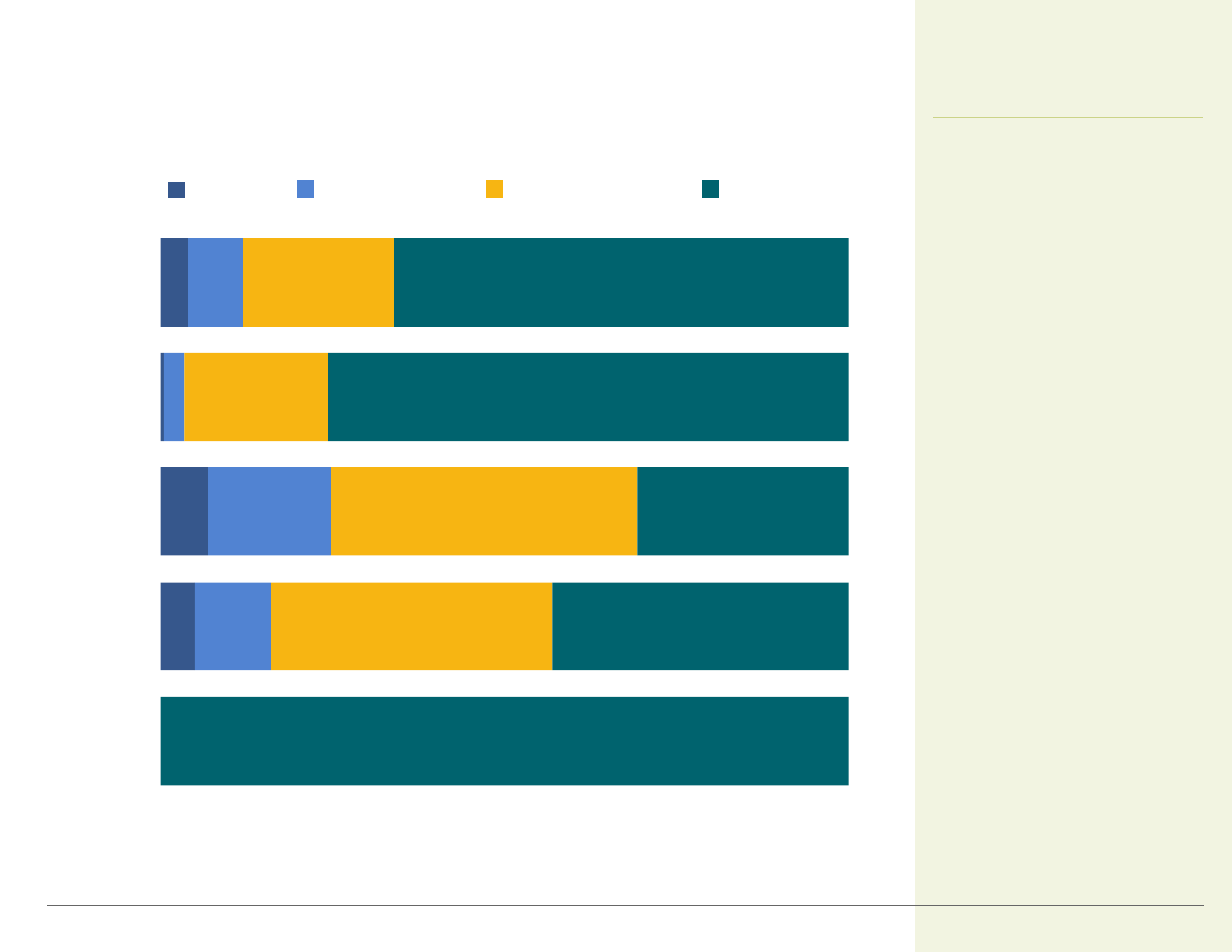
Source: California Employer Health Benefits Survey: 2016, CHCF/NORC.
25
© 2 0 1 7 C A LIFOR NI A H E ALTH CARE FO U N D AT ION
*Distribution is statistically different from All Plans.
Notes: Data based on w orkers with a deductible. POS means poin t-of-service plan. HDHP/SO means high-deductible plan with savings option. HDHPs have a deductible of at least
$2,000 for family coverage. No test was done comparing HDHP/SO with All Plans. Segments m ay not add to 100% due to roundin g.
Deductibles for Family Coverage
Among California workers with
an aggregate family deductible,
66% of workers faced a
deductible of $2,000 or more in
2016.
<$500 $500-$999 $1,000-$1,999 $2,000+
5%
7%
<1%
4%
11%
18%
3%
8%
41%
45%
21%
22%
100%
43%
31%
76%
66%
HDHP/SO
POS
PPO*
HMO
All Plans
(in-network)
(in-network)
by Plan Type, California, 2016
<1%
Benefits and Cost Sharing
California Employer Health Benefits
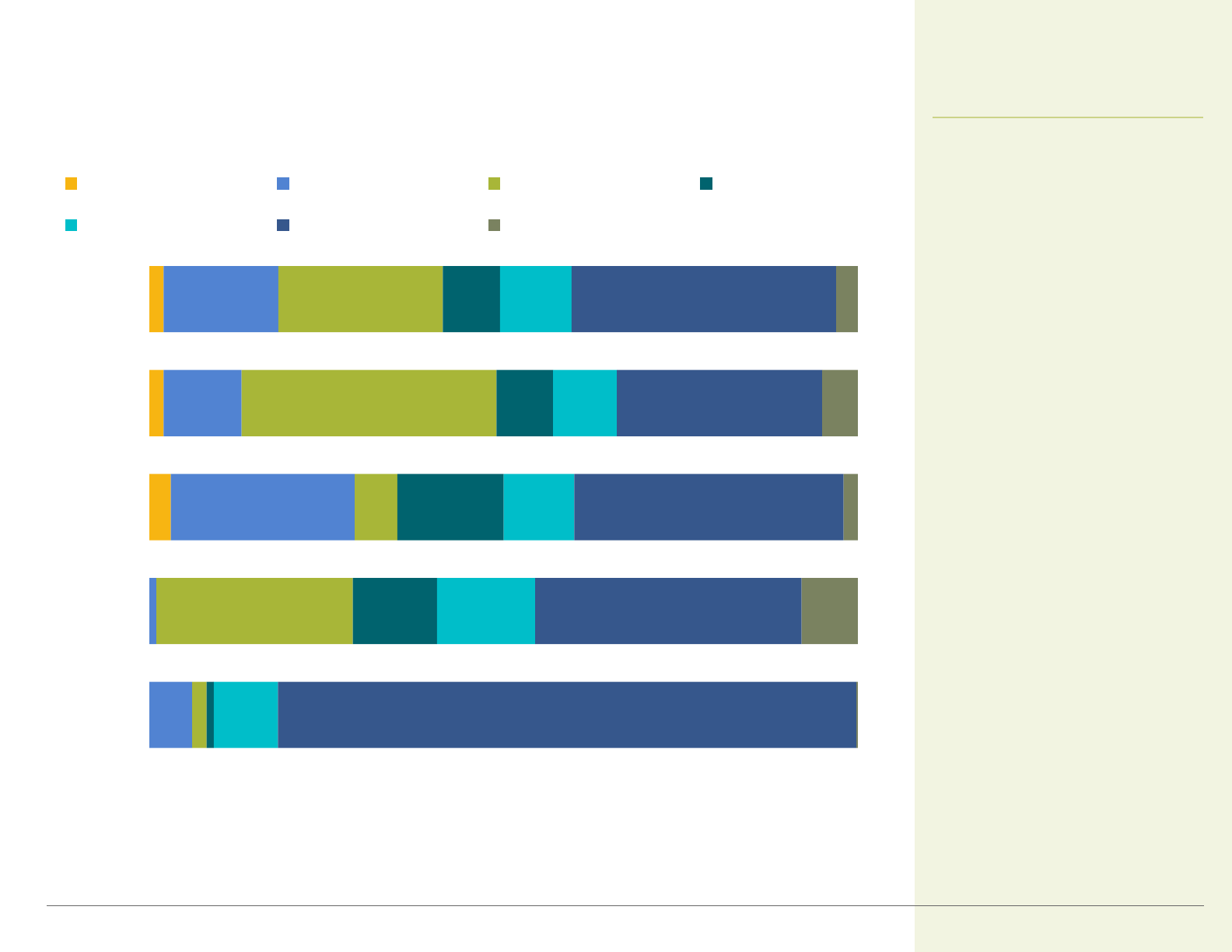
*Distribution is statistically different from All Plans.
Notes: POS means poi nt-of-service plan. HDHP/SO means high-deductible plan with savings option. HDHPs have a deductible of at least $1,000 for single coverage. Since HMOs
typically provide very comp rehensive coverage, not having a limit on out-of-pocket expenditures does not expose enrollees to the same financial risk as it could in other plan t ypes.
Segments m ay not add to 100% due to rounding.
Source: California Employer Health Benefits Survey: 2016, CHCF/NORC.
© 2 0 1 7 C A LIFOR NI A H E ALTH CARE FO U N D AT ION
Annual Out-of-Pocket Limits, Single Coverage
26
by Plan Type, California, 2016
3%
2%
2%
6%
1%
26%
11%
16%
2%
28%
6%
36%
23%
1%
12%
15%
8%
8%
9%
14%
10%
9%
10%
81%
38%
38%
29%
37%
8%
2%
5%
3%
HDHP/SO*
POS
PPO*
HMO
All Plans
<$1,000 $1,000-$1,499 $1,500-$1,999 $2,000-$2,499
$2,500-$2,999 $3,000+ No Limits
(in-network)
(in-network)
Benefits and Cost Sharing
California Employer Health Benefits
Out-of-pocket limits, a plan
feature that helps curb costs for
consumers, can vary
substantially. While the large
majority of covered workers
(97%) with single coverage had
an out-of-pocket limit, for 37%
of workers that limit was $3,000
or more, and 3% of workers
had no limit.
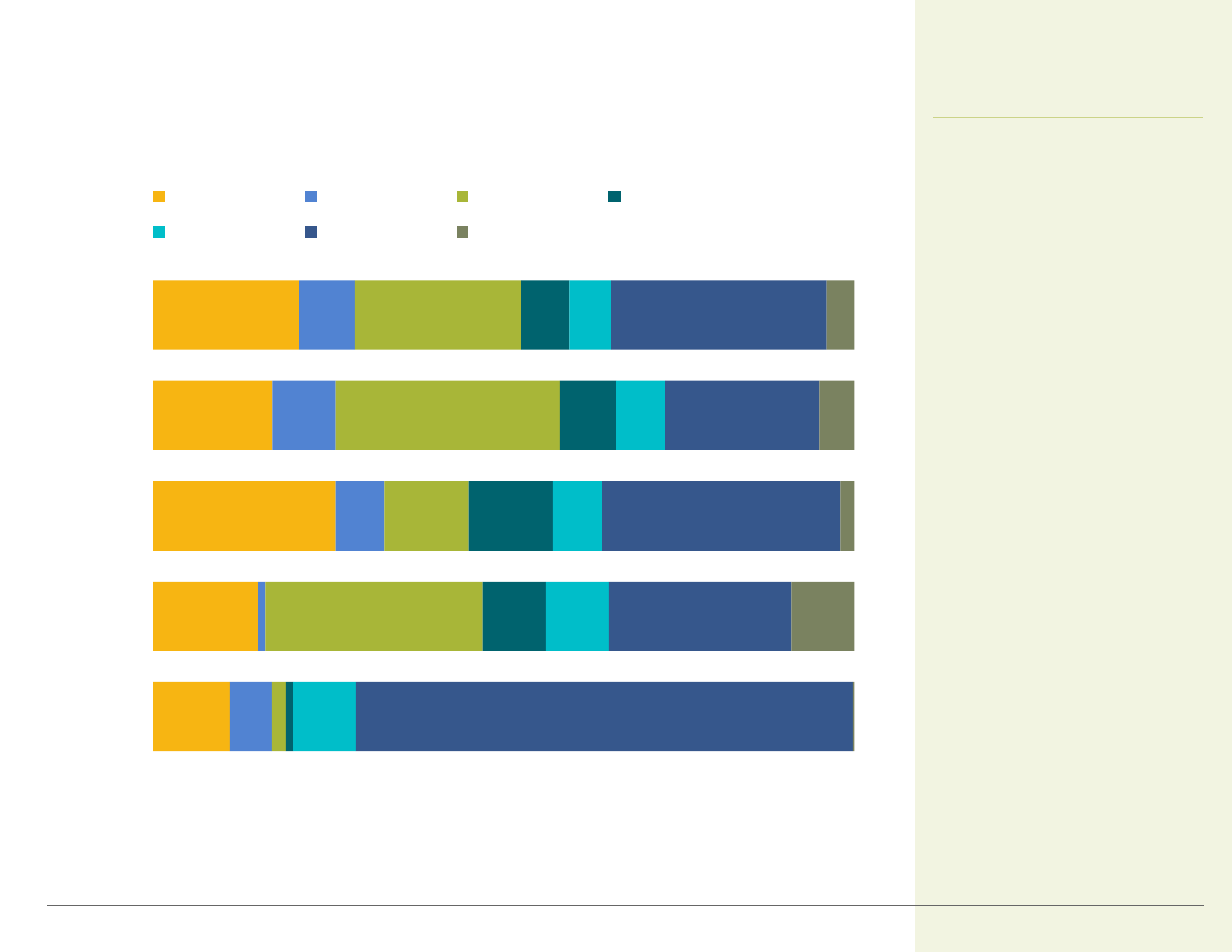
*Distribution is statistically different from All Plans.
Notes: POS means point-of-service plan. HDHP/SO means high-deductible plan with savings option. HDHPs have a deductible of at least $2,000 for family coverage. Since HMOs
typically provide very comp rehensive coverage, not having a limit on out-of-pocket expenditures does not expose enrollees to the same financial risk as it could in other plan t ypes.
Segments m ay not add to 100% due to rounding.
Source: California Employer Health Benefits Survey: 2016, CHCF/NORC.
© 2 0 1 7 C A LIFOR NI A H E ALTH CARE FO U N D AT ION
Only 21% of covered California
workers with family coverage
had an annual aggregate out-of-
pocket limit of less than $2,000,
while 31% had a limit of $6,000
or more. Four percent of
covered workers had no out-of-
pocket limit. The Affordable
Care Act generally limits the
amount of out-of-pocket
expenses. In 2016 that limit was
$6,850 for an individual plan
and $13,700 for a family plan.
Annual Out-of-Pocket Limits, Family Coverage
27
by Plan Type, California, 2016
11%
15%
26%
17%
21%
6%
1%
7%
9%
8%
2%
31%
12%
32%
24%
1%
9%
12%
8%
7%
9%
9%
7%
7%
6%
71%
26%
34%
22%
31%
<1%
9%
2%
5%
4%
HDHP/SO*
POS
PPO
HMO
All Plans
<$2,000 $2,000-$2,999 $3,000-$3,999 $4,000-$4,999
$5,000-$5,999 $6,000+ No Limit
(in-network)
(in-network)
Benefits and Cost Sharing
California Employer Health Benefits
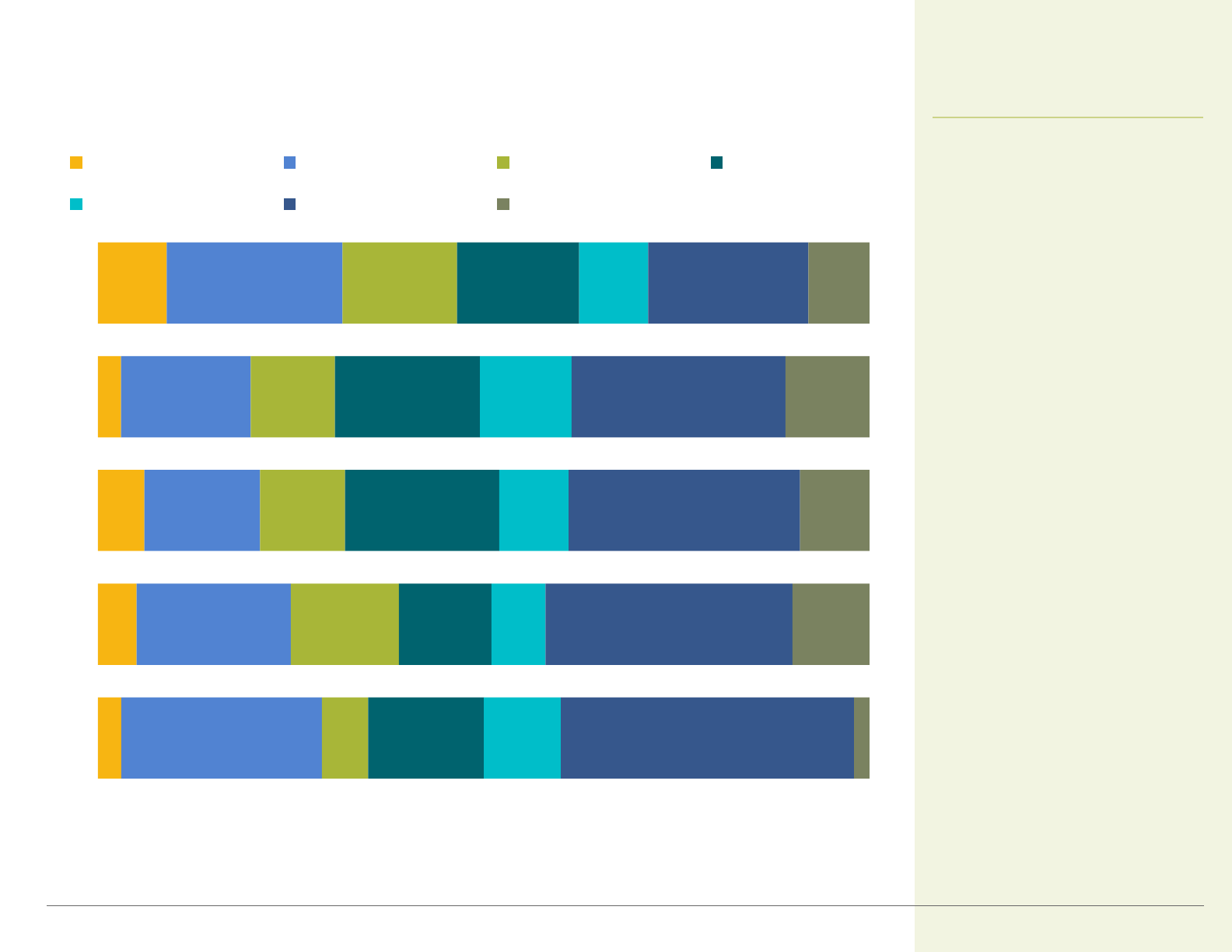
*Distribution is statistically different from previous year shown.
Notes: Includes in-netw ork use only. Segm ents m ay not add to 100% due to rounding.
Source: California Employer Health Benefits Survey: 2008-2016, CHCF/NORC.
28
© 2 0 1 7 C A LIFOR NI A H E ALTH CARE FO U N D AT ION
The proportion of California
workers in PPOs with an out-of-
pocket limit of $3,000 or more
for single coverage increased
from 21% in 2008 to 38% in
2016.
Annual Out-of-Pocket Limits, Single PPO Coverage
California, 2008 to 2016, Selected Years
9%
3%
6%
5%
3%
23%
17%
15%
20%
26%
15%
11%
11%
14%
6%
16%
19%
20%
12%
15%
9%
12%
9%
7%
10%
21%
28%
30%
32%
38%
8%
11%
9%
10%
2%
2008
2010
2012
2014
2016
<$1,000 $1,000-$1,499 $1,500-$1,999 $2,000-$2,499
$2,500-$2,999 $3,000+ No Limit
*
Benefits and Cost Sharing
California Employer Health Benefits
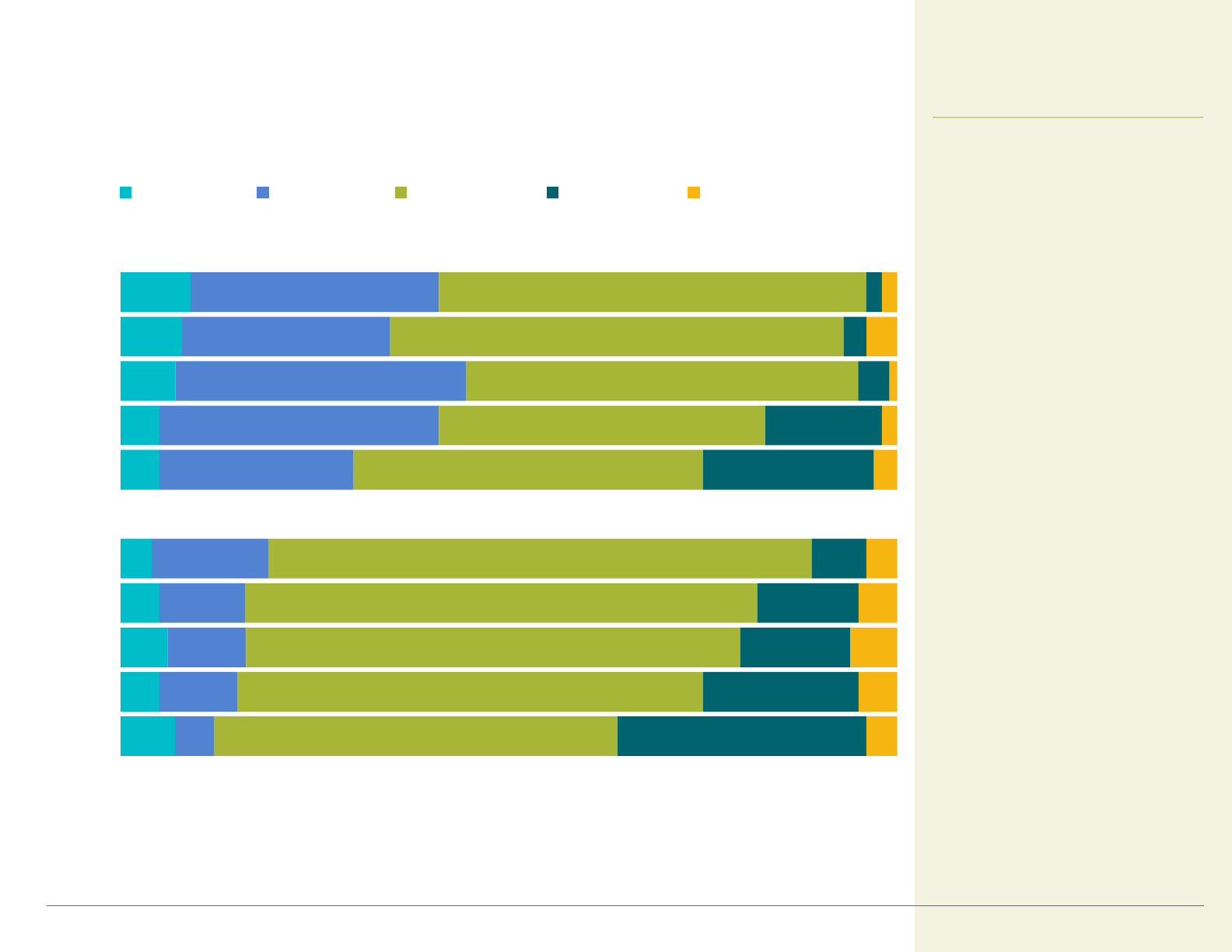
© 2 0 1 7 C A LIFOR NI A H E ALTH CARE FO U N D AT ION
In 2016, 67% of covered
California workers had a three-
or four-tier cost-sharing formula
for prescription drugs, compared
to 84% nationally. The share of
California workers with four tiers
has increased from 2% in 2008
to 22% in 2016. During the same
time, the percentage of workers
with four tiers in the United
States increased from 7% to
32%.
*Distribution is statistically different from previous year shown.
Notes: One tier is the same cost share regardless of drug type. Two tier is one payment for generic drugs and one for brand name. Three tier is one paymen t for generic drugs, another
for preferred drugs, and a third for nonpreferred drugs. Four tier is three-tier cost sharing plus a fourth tier for lifestyle or other specified drugs. Other includes no cost sharing. Preferred
drugs are listed in a plan’s formulary. Nonpreferred drugs are not listed in the formulary. Segments m ay not add to 100% due to rounding .
Sources: California Employer Health Benefits Survey: 2008-2016, CHCF/NORC; author analysis of data from the Survey of Employer-Sponsored Health Benefits public use files: 2008-
2016, Kaiser/HRET.
Workers’ Cost Sharing for Prescription Drugs
9%
8%
7%
5%
5%
4%
5%
6%
5%
7%
32%
27%
37%
36%
25%
15%
11%
10%
10%
5%
55%
59%
50%
42%
45%
70%
65%
63%
60%
52%
2%
3%
4%
15%
22%
7%
13%
14%
20%
32%
2%
4%
1%
2%
3%
4%
5%
6%
5%
4%
2008
2010
2012
2014
2016
2008
2010
2012
2014
2016
One Tier Two Tier Three Tier Four Tier Other
California
United States
29
California vs. United States, 2008 to 2016, Selected Years
*
*
Benefits and Cost Sharing
California Employer Health Benefits
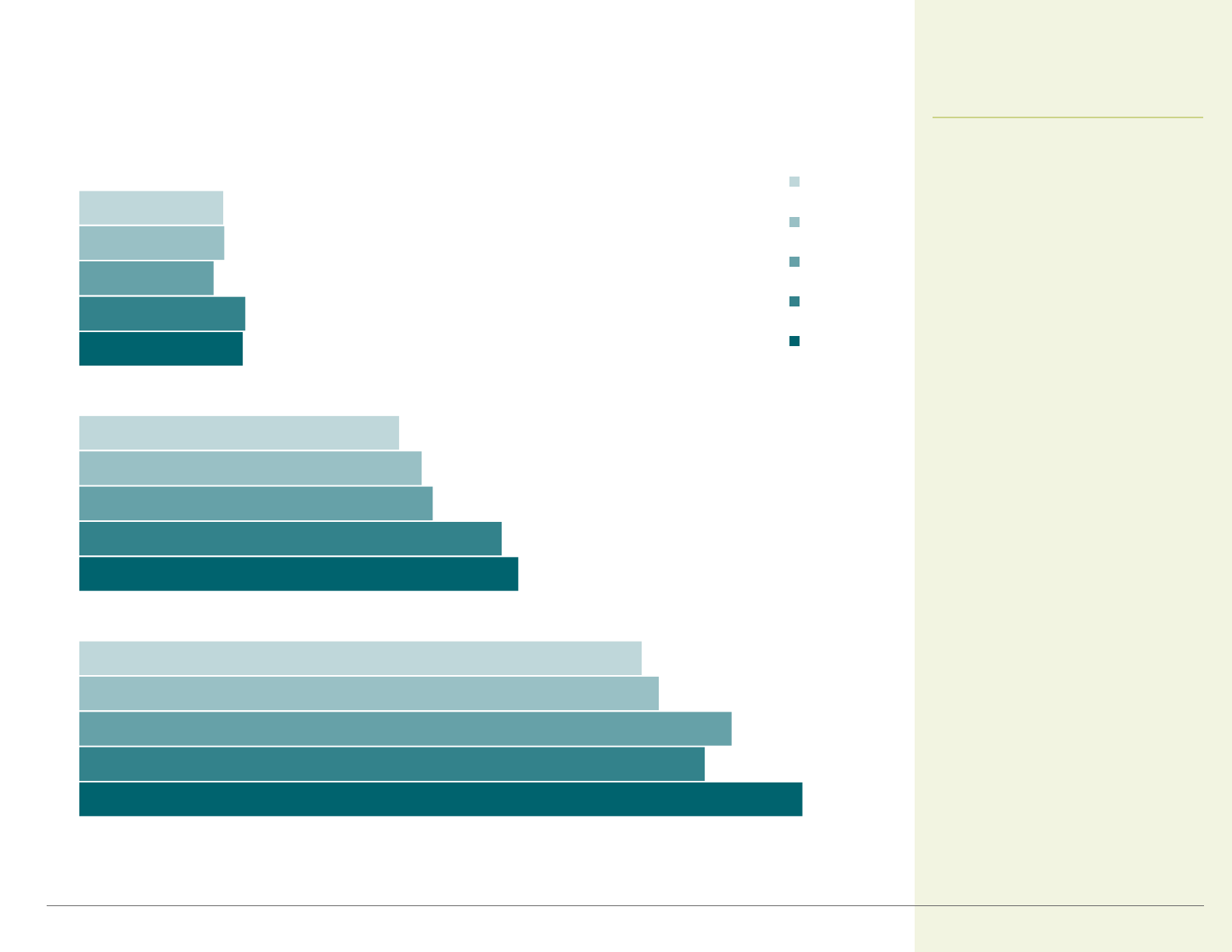
*Estimate is statistically different from previous year shown.
Notes: Preferred drugs are listed in a plan’s formulary. Nonpreferred drugs are not listed in the formulary.
Source: California Employer Health Benefits Survey: 2008-2016, CHCF/NORC.
30
© 2 0 1 7 C A LIFOR NI A H E ALTH CARE FO U N D AT ION
Among firms with four-tier
prescription cost sharing,
average copayments for generic
drugs were less than half what
they were for preferred drugs,
and less than one-fourth what
they were for nonpreferred
drugs. Copayments for all drugs
increased between 2008 and
2016.
Average Prescription Drug Copayments, by Drug Type
$52.79*
$32.05
$11.93
$45.67
$30.82
$12.11
$47.62*
$25.80
$9.79
$42.31
$24.99*
$10.58
$41.05
$23.34
$10.49
2008
2010
2012
2014
2016
Generic Drugs
Preferred Drugs
Nonpreferred Drugs
California, 2008 to 2016, Selected Years
Benefits and Cost Sharing
California Employer Health Benefits
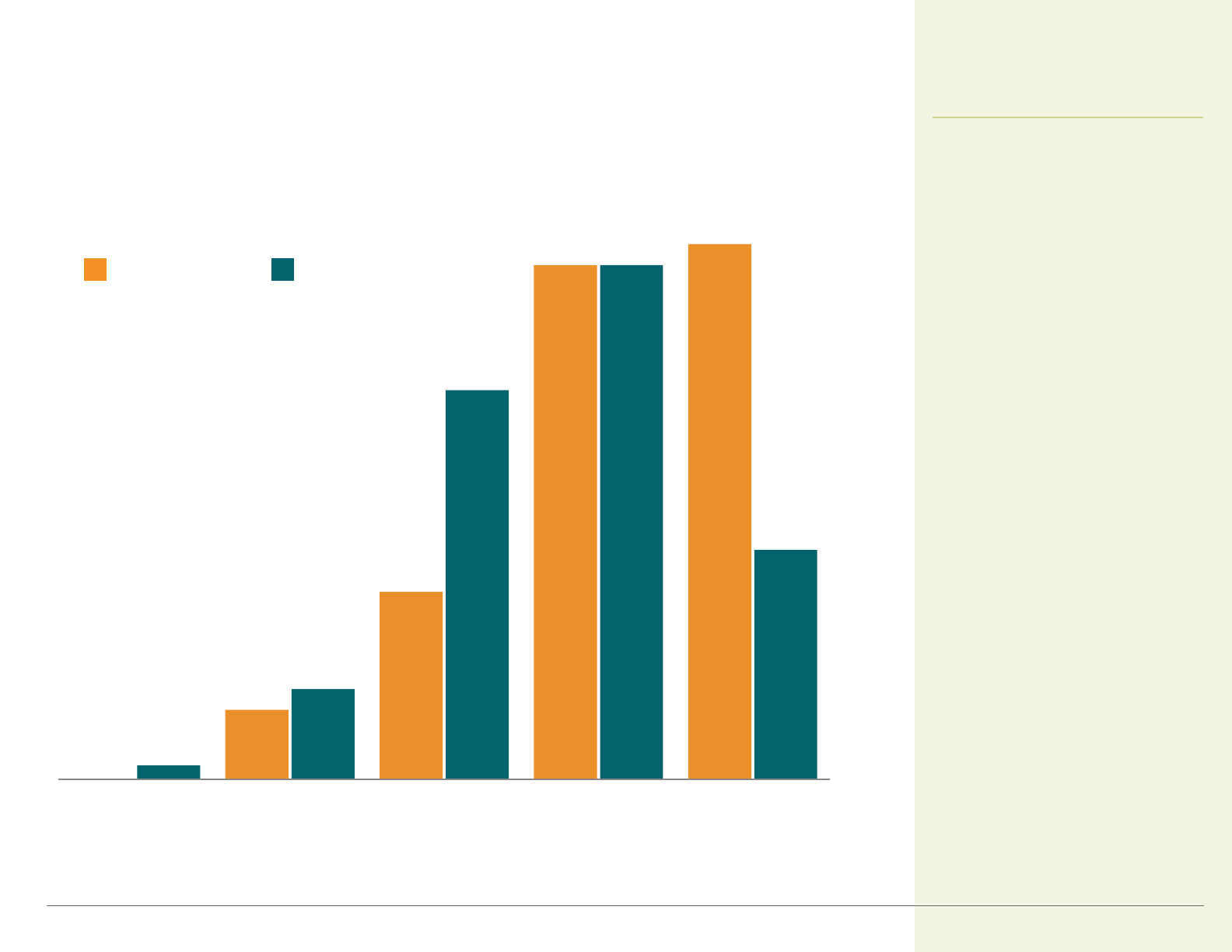
*Estimates are statistically different betw een California and US.
Notes: POS means poi nt-of-service plan. HDHP/SO means high-deductible plan with savings option. HDHPs have a deductible of at least $1,000 for single coverage and at
least $2,000 for family coverage.
Sources: California Employer Health Benefits Survey: 2016, CHCF/NORC; Employer Health Benefits Survey: 2016, Kaiser/HRET.
31
© 2 0 1 7 C A LIFOR NI A H E ALTH CARE FO U N D AT ION
Compared to workers nationally,
California workers were
significantly less likely to have
an HDHP/SO option and
significantly more likely to have
an HMO option. Seventy-seven
percent of covered California
workers had an HMO option,
compared to only 33% of
covered workers nationally.
Plan Options Available to Covered Workers, by Type
California United States
California vs. United States, 2016
<1%
10%
27%
74%
77%
2%
13%
56%
74%
33%
Conventional* POS HDHP/SO* PPO HMO*
Plan Choice and Enrollment
California Employer Health Benefits
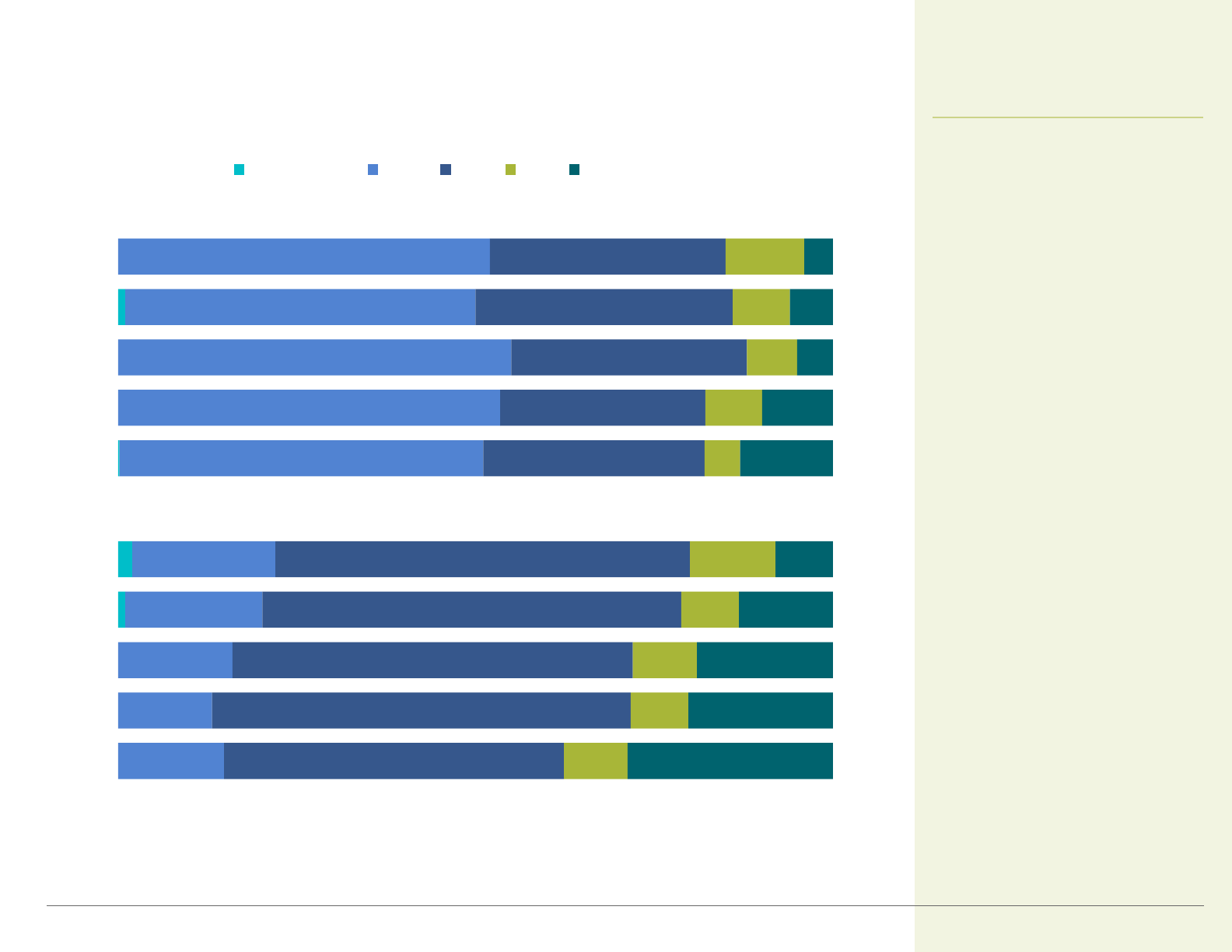
1%
<1%
2%
1%
<1%
<1%
<1%
52%
49%
55%
54%
51%
20%
19%
16%
13%
15%
33%
36%
33%
29%
31%
58%
58%
56%
58%
48%
11%
8%
7%
8%
5%
12%
8%
9%
8%
9%
4%
6%
5%
10%
13%
8%
13%
19%
20%
29%
2008
2010
2012
2014
2016
2008
2010*
2012*
2014
2016
Conventional HMO PPO POS HDHP/SO
*Di str i buti on is stat i sti cal ly differ e n t fr om p revi ous year sh o w n.
Notes: POS means point-of-service plan. HDHP/SO means high-deductible plan with savings option. HDHPs have a deductible of at least $1,000 for single coverage and at least
$2,000 for family coverage. Segments m ay not add to 100% due to roundi n g. C o n ven ti on al plan enr o l lm en t in Ca l if o r ni a wa s l ess t h a n 1% in 200 8 , 201 2, 2014, and
2016. Conv e nt io na l pl an enrol lm en t in t he US was le s s than 1% i n 2 0 12 - 2 01 6 .
Sources: California Employer Health Benefits Survey: 2008, 2010, 2012, 2014, and 2016, CHCF/NORC; author analysis of data from the Survey of Employer-Sponsored Health
Benefits: 2008-2016, Kaiser/HRET.
32
© 2 0 1 7 C A LIFOR NI A H E ALTH CARE FO U N D AT ION
California workers were more
likely to enroll in HMOs.
Nationally, workers were more
likely to enroll in PPO plans.
The percentage of workers
enrolled in high-deductible
health plans tripled from 2008 to
2016, in California and
nationally.
Enrollment of Covered Workers, by Plan Type
California vs. United States, 2008 to 2016, Selected Years
California
United States
Plan Choice and Enrollment
California Employer Health Benefits
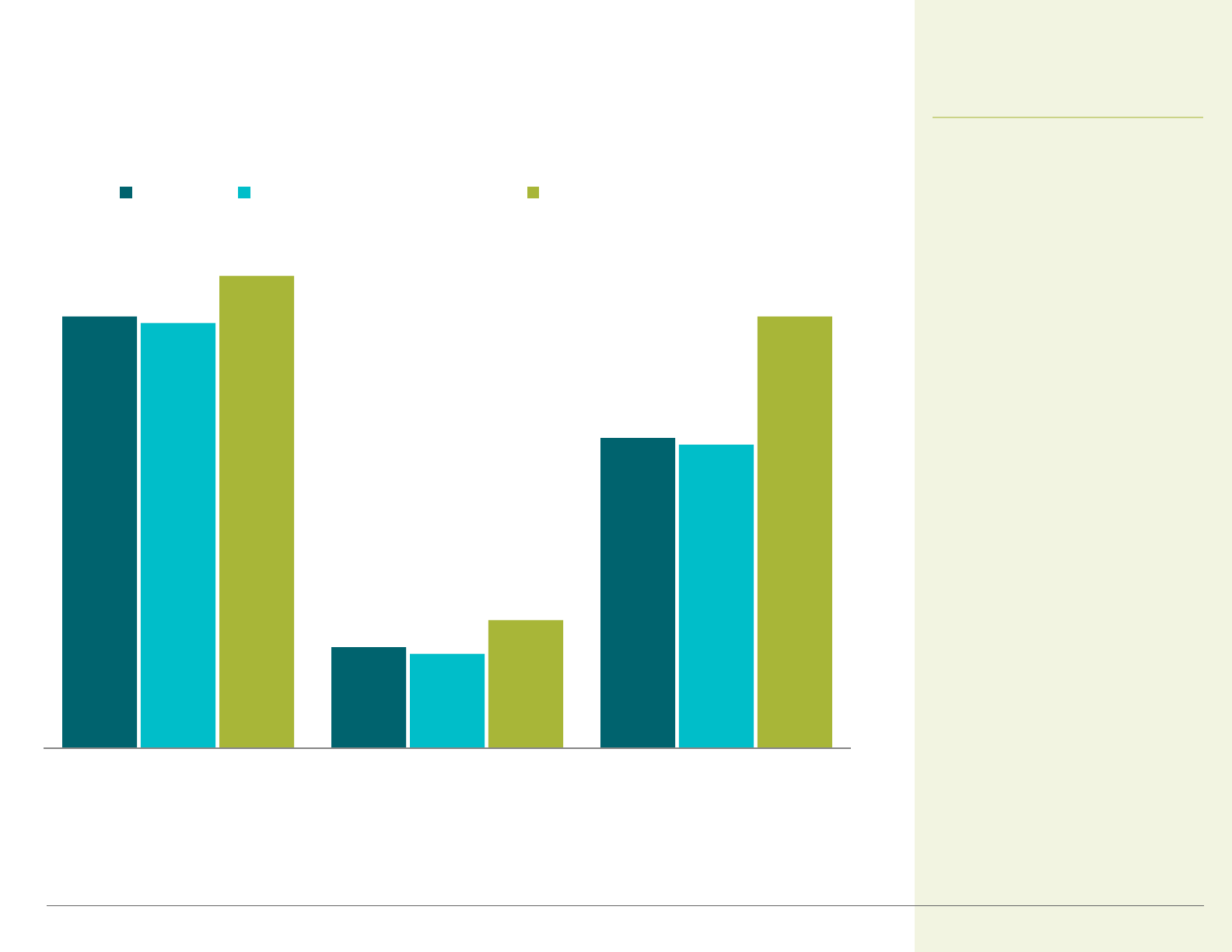
64%
15%
46%
63%
14%
45%
70%
19%
64%
Offer High-Deductible Plan HDHP with HRA HDHP with HSA
All Firms Small Firms (3-199 workers) Large Firms (200+ workers)
33
© 2 0 1 7 C A LIFOR NI A H E ALTH CARE FO U N D AT ION
Compared to other plan types,
HDHPs expose workers to
higher out-of-pocket costs.
Sixty-four percent of all
California firms offered a high-
deductible health plan (HDHP)
in 2016. Of these firms, 15%
offered an HDHP with a health
reimbursement agreement
(HRA), while 46% offered an
HDHP with a health savings
account (HSA).
*Tests found no significant difference betw een small firms and large firms.
Notes: HDHPs (high-deductible health plans) have a deductible of at least $1,000 for single coverage and at least $2,000 for family coverage. HRAs (health rei m bursement
arrangements) are employer-sponsored accounts that provide financial assistance for out-of-pocket health care expenses, and HSAs (health savings accounts) allow
em ployers or employees (and their families) to contribute to a tax-advantaged account, which can be used to provide financial assistance for IRS-appro ved health care
expenses.
Source: California Employer Health Benefits Survey: 2016, CHCF/NORC.
Firms Offering a High-Deductible Health Plan,
by Firm Size
California, 2016
Plan Choice and Enrollment
California Employer Health Benefits
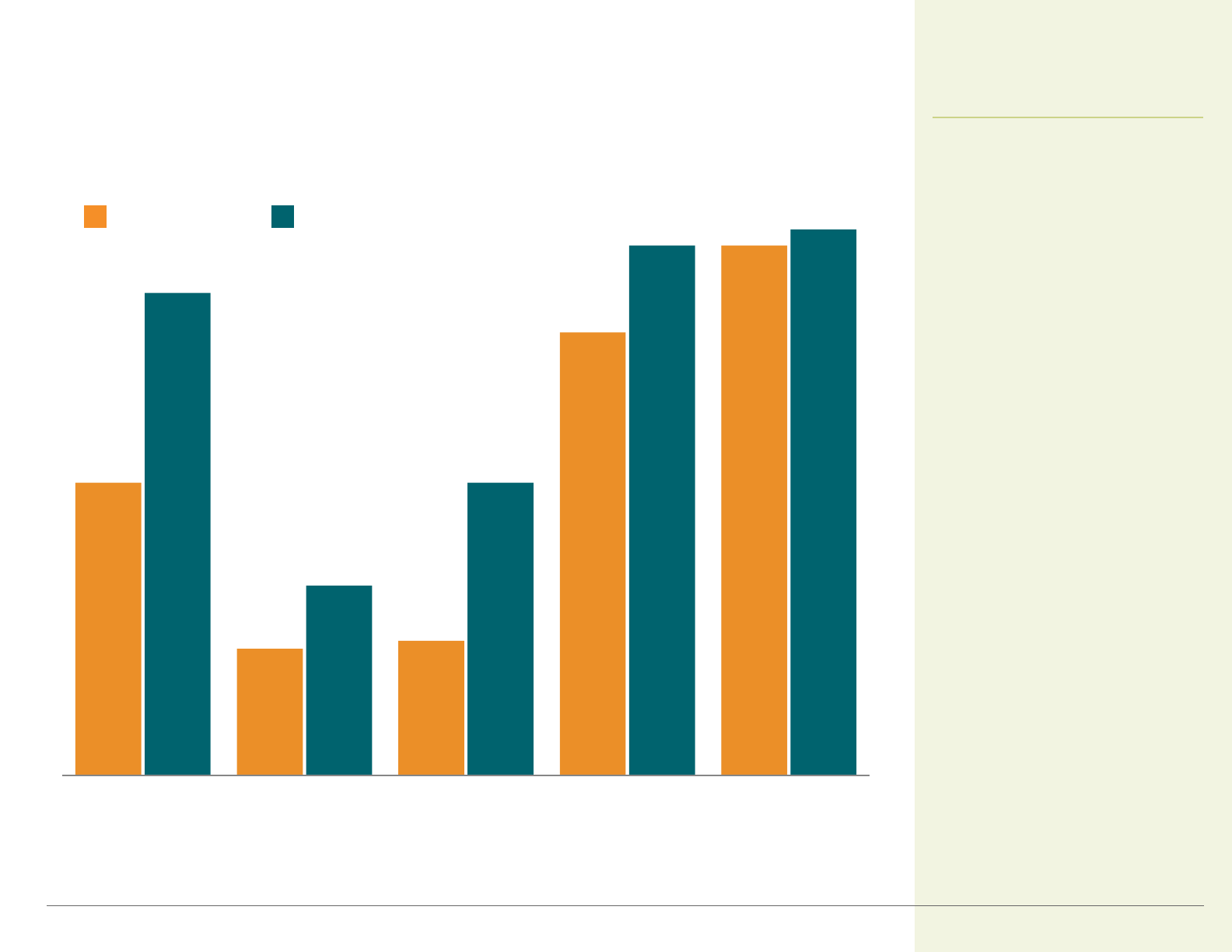
34
© 2 0 1 7 C A LIFOR NI A H E ALTH CARE FO U N D AT ION
Thirty-seven percent of
employees in California were
enrolled in a partly or completely
self-insured plan in 2016,
compared with 61% nationally.
The gap between the state and
national figures is associated
with California’s high HMO
enrollment, since HMOs are
less likely than other plans to be
self-insured.
*Estimates are statistically different betw een California and US.
Notes: Self-insured plans are plans for which an em ployer assumes some or most responsibility for paying health care claims rather than buying coverage from an insurer. POS means
point-of-service plan. HDHP/SO means high-deductible plan with savings option. HDHPs have a deductible of at least $1,000 for single coverage and at least $2, 000 for family
coverage.
Sources: California Employer Health Benefits Survey, CHCF/NORC: 2016; Employer Health Benefits Survey: 2016, Kaiser/HRET.
Employees in Self-Insured Plans, by Plan Type
California United States
37%
16%
17%
56%
67%
61%
24%
37%
67%
69%
All Plans* POS HMO* HDHP/SO PPO
California vs. United States, 2016
Plan Choice and Enrollment
California Employer Health Benefits
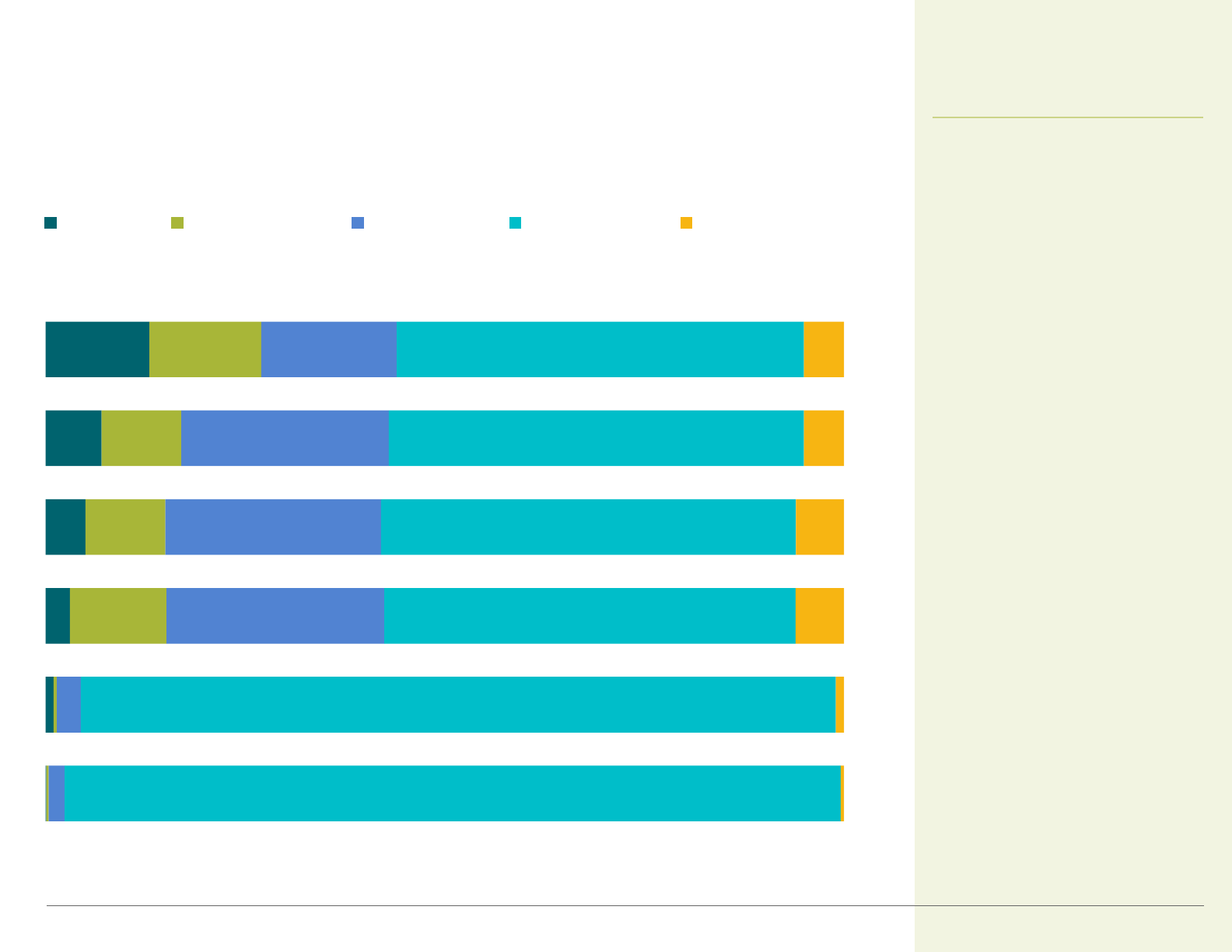
Note: Segments may not add to 100% due to rounding .
Source: California Employer Health Benefits Survey: 2016, CHCF/NORC.
35
© 2 0 1 7 C A LIFOR NI A H E ALTH CARE FO U N D AT ION
Twenty-seven percent of
California employers reported
they are very likely or somewhat
likely to increase the amount
that workers pay for premiums
in the next year. Seventeen
percent of employers stated that
they are very likely or somewhat
likely to increase employees’
deductibles, and 15% stated
that they are very likely or
somewhat likely to increase
what employees pay for
prescriptions.
Likelihood of Firms Making Changes in the Next Year
California, 2016
<1%
1%
3%
5%
7%
13%
<1%
<1%
12%
10%
10%
14%
2%
3%
27%
27%
26%
17%
97%
95%
51%
52%
52%
51%
<1%
1%
6%
6%
5%
5%
Very Likely Somewhat Likely Not Too Likely Not At All Likely Don't Know
Increase the Amount Employees Pay for Premiums
Increase the Amount Employees Pay for Deductibles
Increase the Amount Employees Pay for Coinsurance or Copays
Increase the Amount Employees Pay for Prescription Drugs
Restrict Employee Eligibility for Coverage
Drop Coverage Entirely
Employer Views and Practices
California Employer Health Benefits
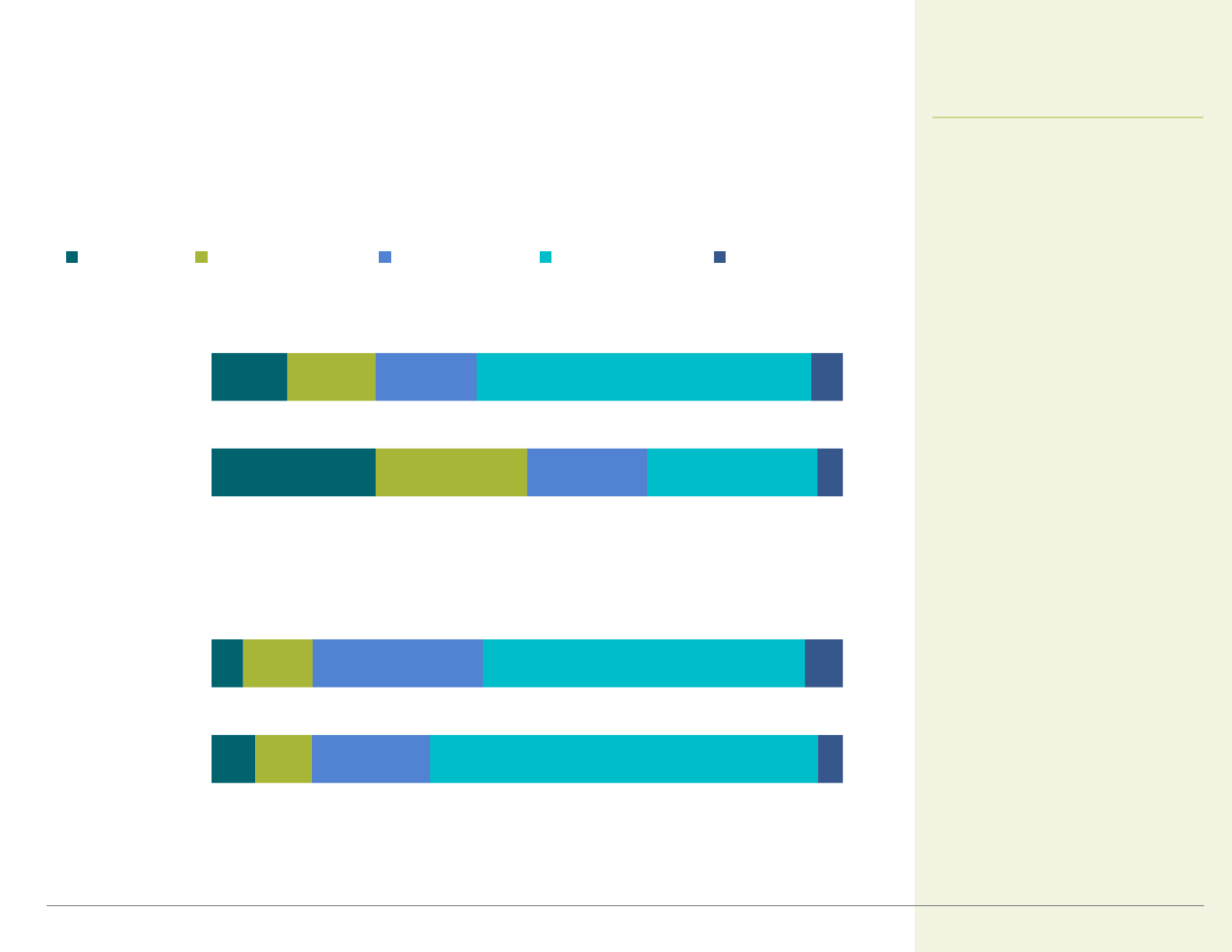
Note: Segments may not add to 100% due to rounding .
Source: California Employer Health Benefits Survey: 2016, CHCF/NORC.
36
© 2 0 1 7 C A LIFOR NI A H E ALTH CARE FO U N D AT ION
Compared to small firms, larger
firms in California were more
likely to report that they are very
likely or somewhat likely to
increase the amount employees
pay for health insurance
premiums in the coming year.
*Estimate is statistically different betw een small and large firms.
Likelihood of Firms Making Selected Changes in the
Next Year
by Firm Size, California, 2016
7%
5%
26%
12%
9%
11%
24%
14%
19%
27%
19%
16%
62%
51%
27%
53%
4%
6%
4%
5%
Large Firm
(200+ workers)
Small Firm
(3-199 workers)
Large Firm*
(200+ workers)
Small Firm*
(3-199 workers)
Very Likely Somewhat Likely Not Too Likely Not At All Likely Don't Know
Increase Amount Worker Pays for Coinsurance or Copayments
Increase Worker Share of Premiums
Employer Views and Practices
California Employer Health Benefits
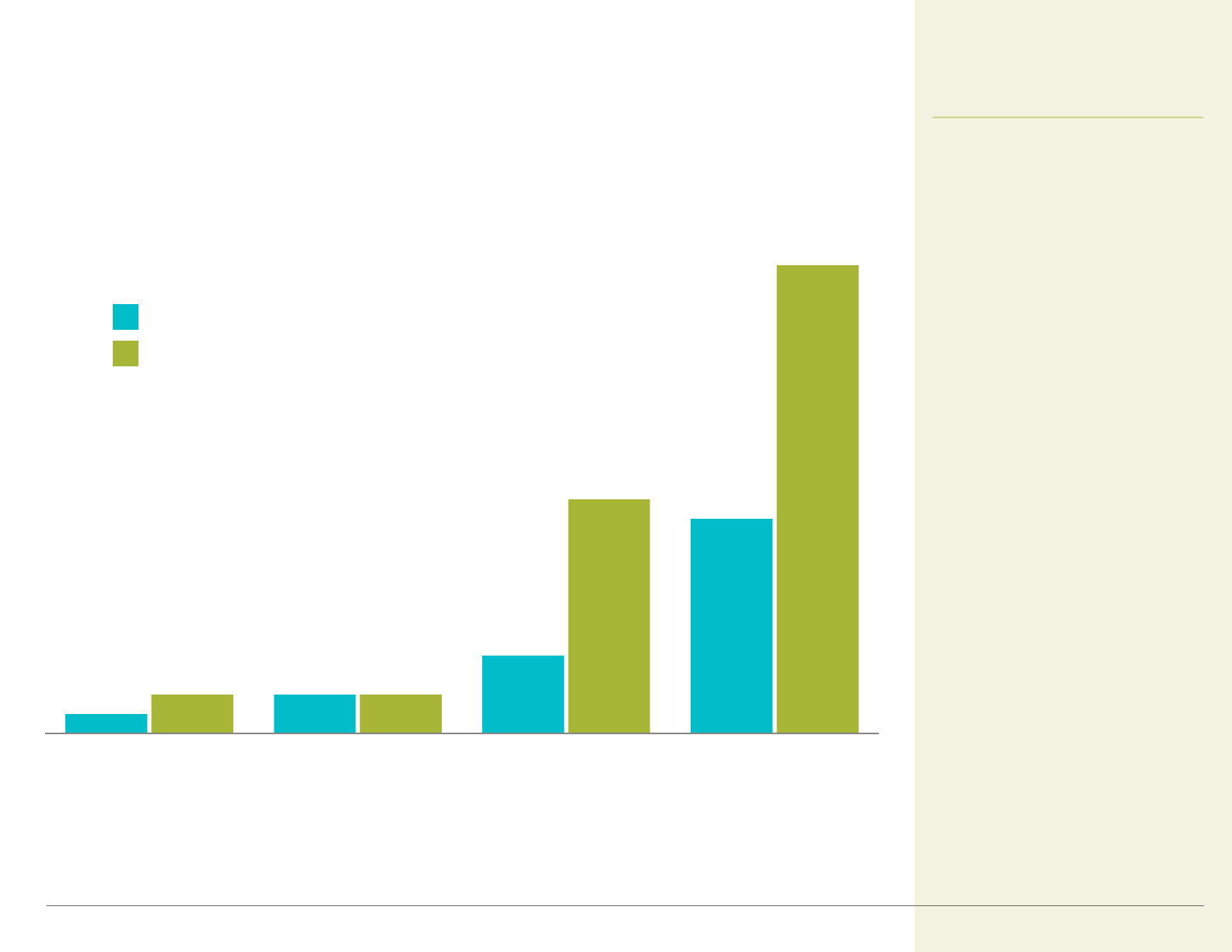
1%
2%
4%
11%
2%
2%
12%
24%
Reduced hiring of full-
time workers
Reclassified jobs from
full-time to part-time
to reduce eligibility
Reclassified jobs from
part-time to full-time
to increase eligibility*
Extended eligibility to
workers not previously
eligible*
Source: California Employer Health Benefits Survey: 2016, CHCF/NORC.
37
© 2 0 1 7 C A LIFOR NI A H E ALTH CARE FO U N D AT ION
In 2016, employers offering
health insurance were more
likely to take actions that
increased worker eligibility for
health benefits, such as
reclassifying jobs from part-
time to full-time, or extending
coverage to workers not
previously eligible, than to
take actions to reduce
eligibility.
Firms That Made Selected Changes in the Past Year
Small Firms (3-199 workers)
Large Firms (200+ workers)
*Estimate is statistically different betw een small and large firms.
by Firm Size, California, 2016
Employer Views and Practices
California Employer Health Benefits
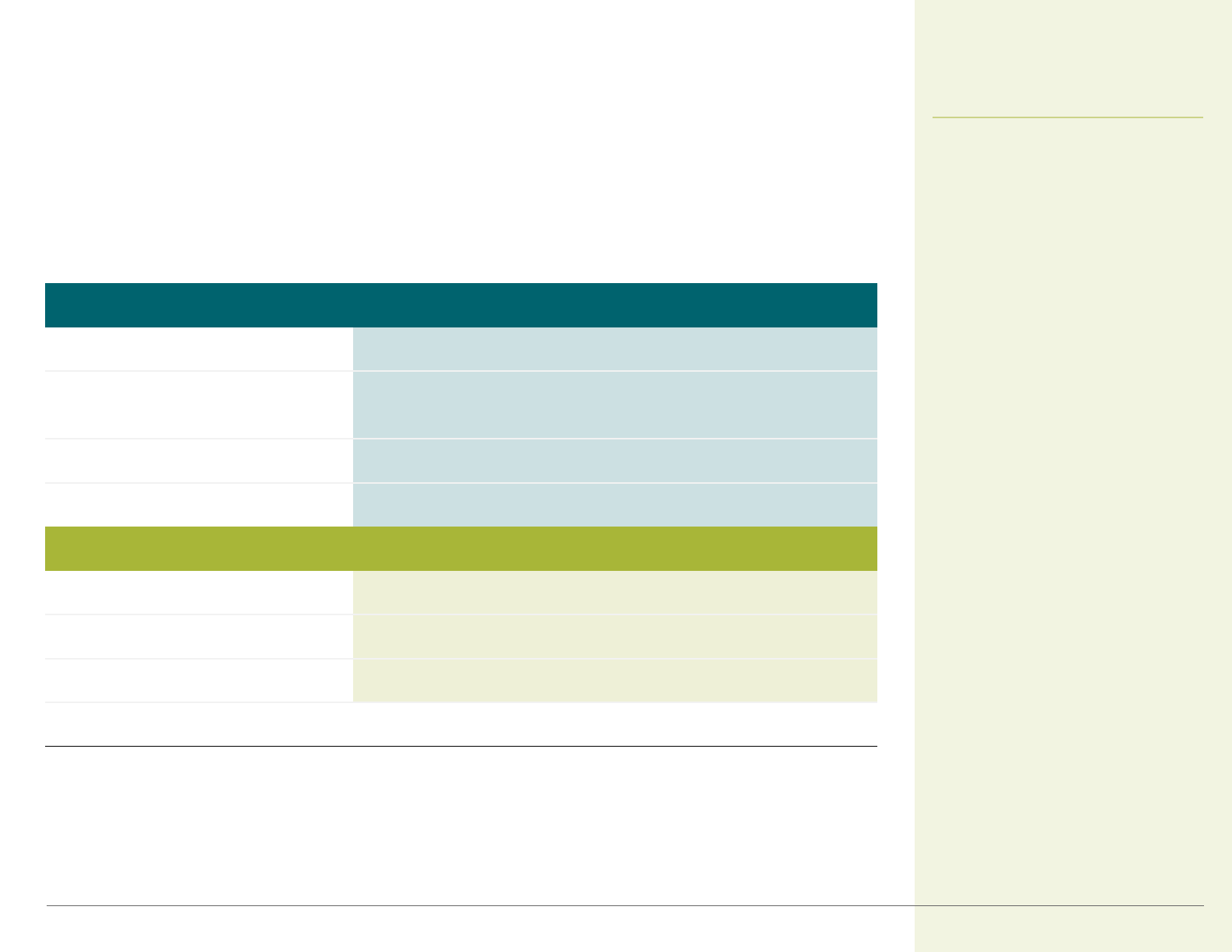
Notes: Tests found no statistically significant differences for any subgroups. Los Angeles and San Francisco are defined as the m etropolitan statistical area (MSA).
Source: California Employer Health Benefits Survey: 2016, CHCF/NORC.
38
© 2 0 1 7 C A LIFOR NI A H E ALTH CARE FO U N D AT ION
In the past year, 19% of
California firms increased cost
sharing, 12% moved benefit
options to an HRA or HSA, and
4% reduced the scope of
covered benefits.
Firms That Made Selected Changes in the Past Year
INCREASED COST
SHARING
MOVED BENEFIT
OPTIONS TO HRA
OR HSA
REDUCED SCOPE
OF COVERED
BENEFITS
INCREASED
INCENTIVES TO
USE LESS COSTLY
PROVIDERS
FIRM SIZE
Small Firms
(3-199 workers)
19% 12% 4% 3%
Large Firms
(200+ workers)
21% 14% 2% 8%
200-999 workers 18% 15% 2% 4%
1,000+ workers 26% 13% <1% 15%
REGION
Los Angeles
18% 15% 2% 5%
San Francisco
17% 2% 9% 1%
Rest of State
21% 24% 1% 4%
All Firms
19% 12% 4% 4%
by Firm Size and Region, California, 2016
Employer Views and Practices
California Employer Health Benefits
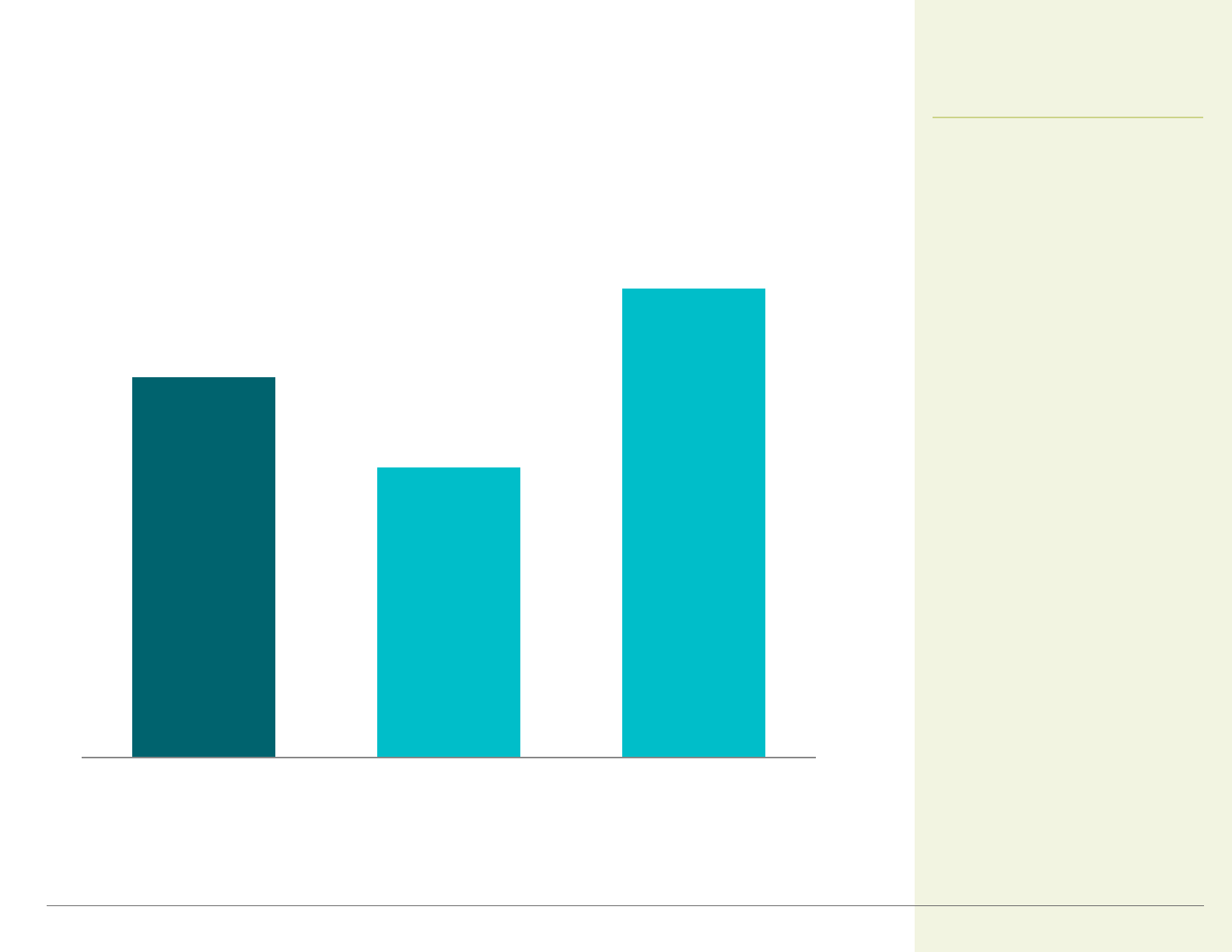
39
© 2 0 1 7 C A LIFOR NI A H E ALTH CARE FO U N D AT ION
Notes: Tests found no significant difference between offering and nonoffering firms. Small firms with fewer than 75 employees. The Small Business Health Options Program (SHOP) includes
federal- or state-sponsored exchanges (Covered California for Small Business in California) in which small employers m ay offer and contri bute to health insurance provided to their
em ployees. So me employers are eligible for tax credits wh e n purchasing coverage on the exchanges.
Source: California Employer Health Benefits Survey: 2016, CHCF/NORC.
In 2016, 7.5% of small firms that
did not offer health coverage
said they looked for a health
plan on the exchange,
compared to 12% of offering
small firms.
Looked at SHOP Exchange, Selected Small Firms
Offering and Nonoffering, California, 2016
9.8%
7.5%
12.1%
All Nonoffering Firms Offering Firms
Employer Views and Practices
California Employer Health Benefits
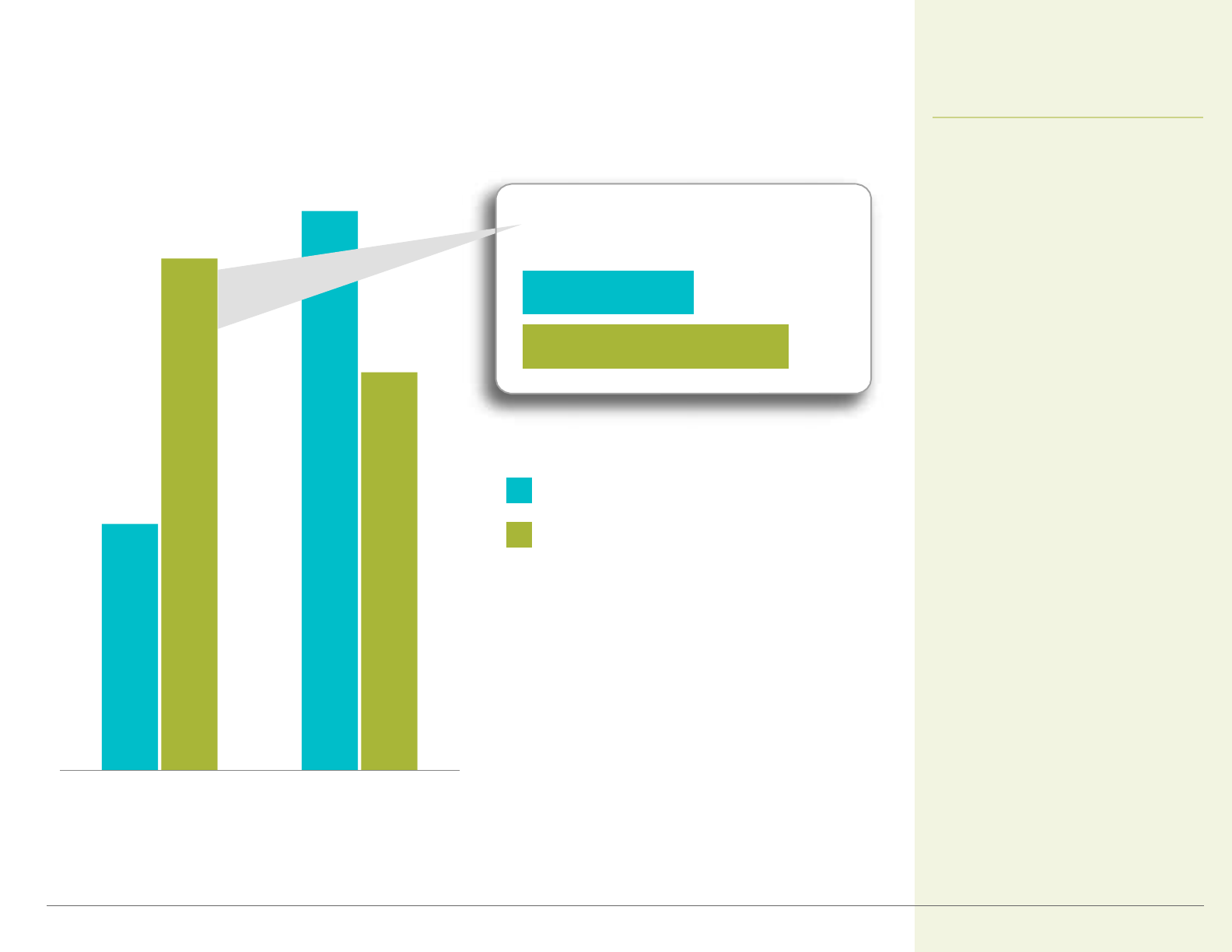
26%
59%
54%
42%
Covers Telemedicine
Services
Covers Care Received
at a Retail Clinic*
Small Firms
(3-199 workers)
Large Firms
(200+ workers)
Telemedicine Coverage Includes...
Behavioral Health Visits
Source: California Employer Health Benefits Survey: 2016, CHCF/NORC.
40
© 2 0 1 7 C A LIFOR NI A H E ALTH CARE FO U N D AT ION
Large firms were more likely
than small firms to offer
coverage for telemedicine
services, and to offer
behavioral health
telemedicine visits. Over half
of small offering firms covered
care received at a retail clinic.
Firms Covering Telemedicine and Retail Clinics in
Plan with Largest Enrollment
*Estimate is statistically different betw een small and large firms.
by Firm Size, 2016
53%
34%
Employer Views and Practices
California Employer Health Benefits

Methodology
The California Employer Health Benefits Survey is a joint product of the
California Health Care Foundation (CHCF) and the National Opinion
Research Center (NORC). The survey was designed and analyzed by
researchers at NORC and administered by National Research (NR). The
findings are based on a random sample of 705 interviews with employee
benefit managers in private firms in California. NR conducted interviews
from June to October 2016. As with prior years, the sample of firms was
drawn from the Dun & Bradstreet list of private employers with three or
more workers. The margin of error for responses among all employers is
+/– 3.8%, for responses among employers with 3 to 199 workers it is +/–
5.0%, and among employers with 200 or more workers it is +/– 5.9%.
Some exhibits do not sum to 100% due to rounding effects.
The Kaiser Family Foundation sponsored this survey of California
employers from 2000 to 2003. A similar employer survey was also
conducted in 1999 in California, in conjunction with the Center for Health
and Public Policy Studies at the University of California, Berkeley. The
Health Research and Educational Trust (HRET) collaborated on these
surveys from 1999 to 2004. The Center for Studying Health System Change
collaborated on these surveys from 2005 to 2006.
This survey instrument is similar to a national employer survey conducted
annually by the Kaiser Family Foundation and HRET.
The US results in this study are either from the published reports,
or in a few cases, from author calculations from the survey’s public use
files. A full analysis of the US data set is available on the foundation’s
website at www.kff.org. Both the California and US surveys asked questions
about health maintenance organizations (HMOs), preferred provider
organizations (PPOs), point-of-service (POS) plans, and high-deductible
health plans with a savings option (HDHP/SOs). Conventional (fee-for-
service) plans are generally excluded from the plan type analyses because
they compose such a small share of the California market
Many variables with missing information were identified as needing
complete information within the database. To control for item
nonresponse bias, missing values within these variables were imputed
using a hot-deck approach. Calculation of the weights follows a common
approach. First, the basic weight is determined, followed by a survey
nonresponse adjustment. Next, the weights are trimmed in order to
reduce the influence of weight outliers. Finally, a post-stratification
adjustment is applied.
All statistical tests in this chart pack compare either changes over time, a
plan-specific estimate with an overall estimate, or subcategories versus all
other firms (e.g., firms with 3 to 9 workers vs. all other firms). Tests include
t-tests and chi-square tests, and significance was determined at p < .05
level. Due to the complex nature of the design, standard errors are
calculated in SUDAAN.
An important note about the methodology: Rates of change for total
premiums, for worker or employer contributions to premiums, and other
variables calculated by comparing dollar values in this report to data
reported in past CHCF or KFF publications should be used with caution
due to both the survey’s sampling design and the way in which plan
information is collected. Rates calculated in this fashion not only reflect a
change in the dollar values but also a change in enrollment distribution,
thus creating a variable enrollment estimate. However, rates of change in
premiums are collected directly as a question in the California survey. This
rate of change holds enrollment constant between the current year and
the previous year, thus creating a fixed enrollment estimate. Because the
survey does not collect information on the rate of change in other
variables, additional rates are not reported. The national survey conducted
by Kaiser/HRET, however, stopped collecting directly rates of change in
premiums in its 2008 survey. Therefore, the rate of change in total
premiums in the US provided in this report uses a variable enrollment
estimate.
California Employer Health Benefits
AB O U T T H I S SERI ES
The California Health Care Almanac is an
online clearinghouse for data and analysis
examining the state’s health care system. It
focuses on issues of quality, affordability,
insurance coverage and the uninsured, and
the financial health of the system with the
goal of supporting thoughtful planning and
effective decisionmaking. Learn more at
www.chcf.org/almanac.
AU T H O R S
Heidi Whitmore, Principal Research Scientist
Jon Gabel, Senior Fellow
NORC at the University of Chicago
FOR MORE INFORMAT IO N
California Health Care Foundation
1438 Webster Street, Suite 400
Oakland, CA 94612
510.238.1040
www.chcf.org
41
